CATHOLIC
END-OF-LIFE & FUNERAL PLANNING

END-OF-LIFE & FUNERAL PLANNING
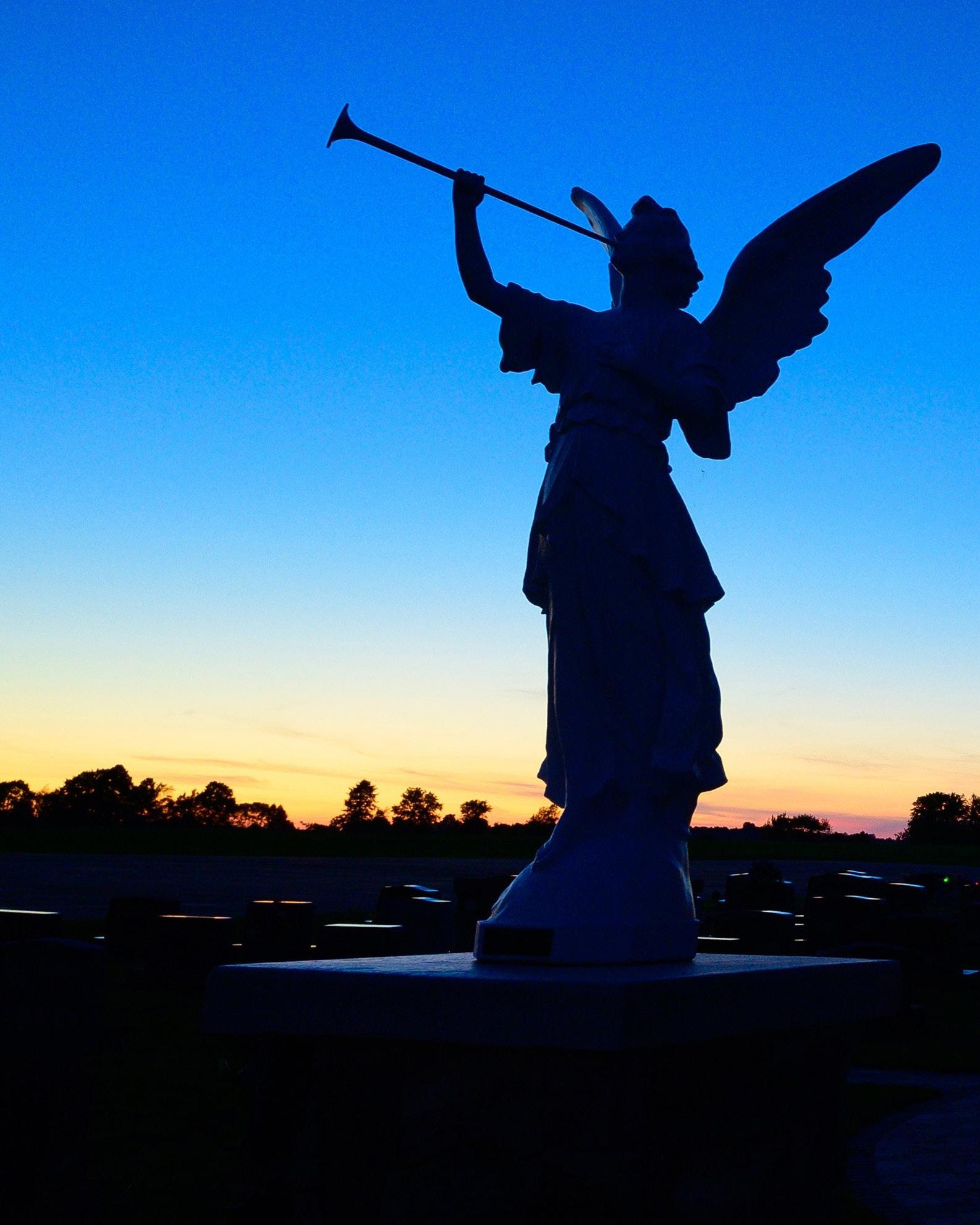
INSIDE: Planning
Local Catholic cemeteries and columbaria
Why do we pray for the dead?
Guidance on end-of-life health care

DAVID WERNING OSV News
Atthe end of our earthly lives, our faith tells us there will be four last things: death, judgment, hell and heaven. Reflecting on such topics in November is appropriate.
Clearly, bringing Jesus’ saving acts to bear upon the four last things makes all the difference. Without faith, death can be seen in a merely utilitarian way. Rather than being an experience that one “lives,” including reflecting on it and preparing for it, death becomes something to be forestalled at all costs.
The Christian, by contrast, sees the four last things as parts of a very real and profoundly meaningful life with God that extends beyond the grave. Indeed, life cannot be understood fully without acknowledging all four. Each of them reflects God’s love and mercy and justice in its own way.
Given the promises of Jesus – that He would, once and for all, destroy the power of death and open the gates of heaven – every Christian should develop a healthy appreciation of the last things.
Among the four last things, death is seen by both believers and nonbelievers as the end of the physical existence human beings enjoy on this earth, but that’s where the agreement ends. A faithless view stops at the grave. The Catholic Church, on the other hand, sees death
within the context of God’s revelation.
Based on Scripture and tradition, and ultimately on Jesus’ witness, the Church recognizes death as the just punishment for the freely chosen sins of human beings. God desired sons and daughters who would choose freely to love each other and their Creator.
Human beings, however, instead invited death into the world by committing the original sin: rejecting the world as God created it and asserting themselves as equals to God. Hence the separation from God and the loss of mortal life.
‘Understood in the light of Jesus, death takes on a new meaning.’
God responds by honoring the relationship with human beings, even though they did not. In a word, God’s response is Jesus. Jesus has saved the world through His life, death and resurrection. Human beings now can accept salvation, to turn back to God by receiving His forgiveness and yielding to His will and, after dying themselves, to enter eternal life.
Understood in the light of Jesus, death takes on a new meaning. It no longer has power over a person who abides in Jesus. Therefore, death can be greeted with serenity when it comes. Passing from this life to the next is simply moving from one way of living in Jesus to another. The meaning is this: For one who remains faithful to Jesus, life is changed, not ended, at death.
The Church’s teaching on death can have both a comforting and sobering effect. It is comforting to know that life continues, but the fact that one’s time on this earth is limited should bring a weightiness to one’s decisions.
The basic meaning of the Church’s teaching about judgment is that the choices one makes have value. God determines the value of one’s choices and metes out the appropriate reward or punishment. This teaching tends to evoke two dominant feelings: fear and satisfaction. Fear is not a bad feeling to have if one is living a sinful life; it might even prompt one toward conversion. Fear, in the sense of awe, is appropriate, too, for God can judge everyone and every act in perfect justice and mercy. Only God knows the depths of each person’s heart; only He knows the advantages and disadvantages a person had; only He knows the full circumstances of every person’s life and every situation. God knows the full truth and will judge accordingly.
Satisfaction is the other common feeling many people have regarding God’s judgment, which is good if by “satisfaction” one means a sense of contentment concerning God’s ultimate victory over all evil.
After a person has been judged, he or she will spend eternity in one of two states: hell or heaven. (Many people
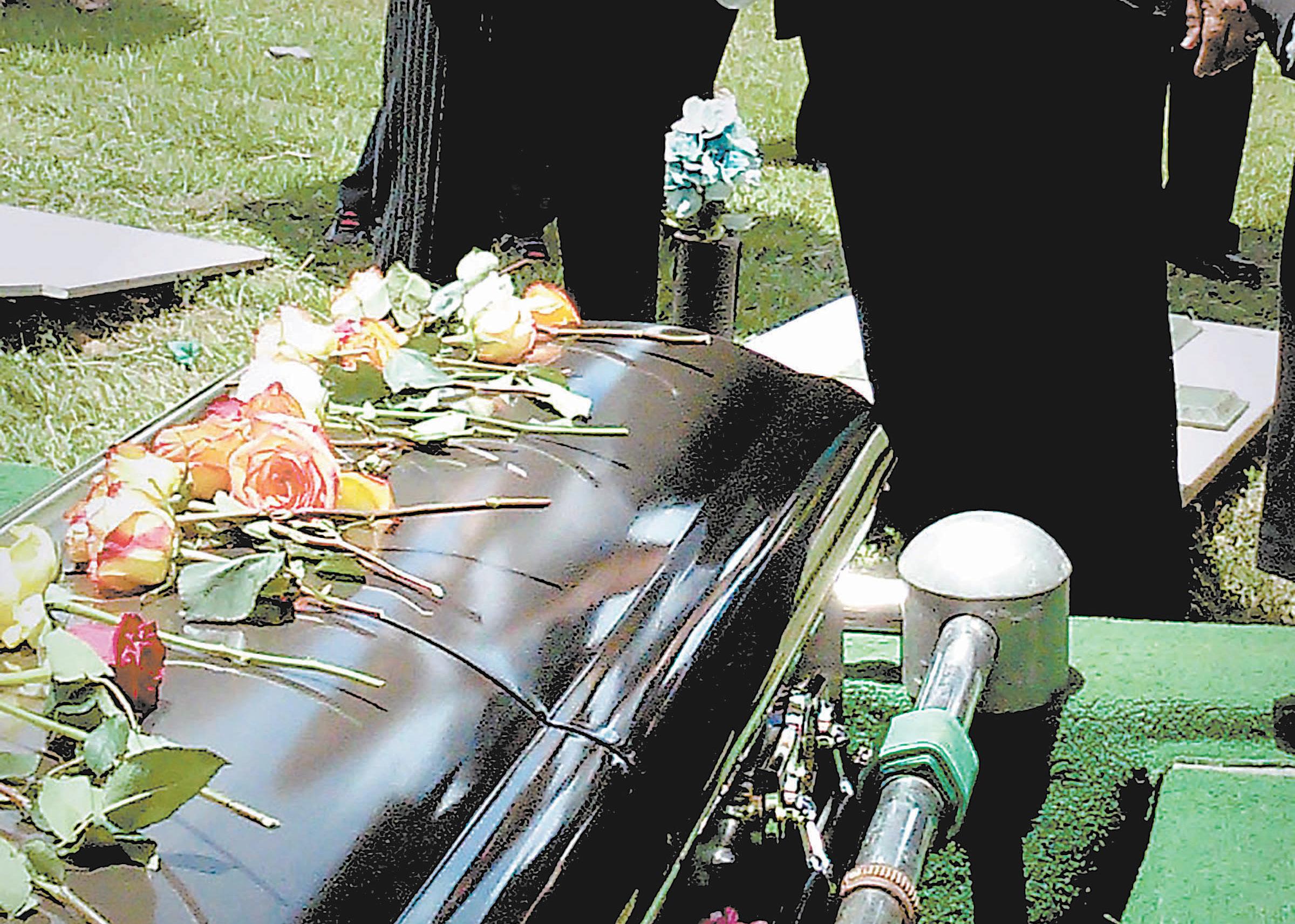
FATHER MICHAEL CUMMINS Word on Fire Institute
The life of a parish priest affords a unique vantage point – not just on developments within the Church, but also on movements in society. It is quite amazing what you can pick up on as a priest as you make your rounds of home visits, pastoral calls, work with the poor and being present in moments of grief. If you listen carefully, you can discern quite a bit about the state of our world and society.
Some of these movements are hope-filled while others, sadly, are troubling. A trend I find troubling is a cheapening (for lack of a better word) of the funeral experience and ritual. I believe this cheapening testifies to a growing impoverishment of the human spirit. There are some understandable factors as to why Catholic funerals are falling out of favor: the cost of funerals and the commercialization of the funeral industry, our society’s unease with death, the reality of families being spread out and therefore not in as much contact and conversation, the increasing use of cremation, the growing number of non-Catholic spouses or other family members who are not familiar with Catholic rituals and customs. These are honest realities that should be acknowledged.
Yet there are other choices made regarding funerals that I do believe are unnecessary and, in fact, diminish the
meaningfulness and benefits of a funeral and prayers for the deceased in a family’s grieving process. Some people choose to forego all things “Catholic” for a funeral because they are not Catholic or have left the Church, even though the deceased was Catholic and was sincere in practicing his or her faith. In a similar vein, some choose not to have a funeral Mass or do anything at the parish church but rather have a service just at the funeral home or graveside in order to simplify things for everyone, and sometimes even to skirt around the possibility of offending someone who may be out of sorts with the Church. Some choose to forego a Catholic funeral in favor of more contemporary approaches often offered through the funeral business. In our consumer mentality, we sometimes only attach value to something if we have to spend money on it and if it seems flashy.
important opportunity to be nourished by the beauty and hope found in the Catholic funeral celebration. The Catholic funeral Mass – and all of the Church’s beautiful rituals surrounding the end of life – speak to us on many levels about the purpose of one’s life, God’s plan of salvation and the hope of eternal life, and how to handle the inevitability of grief and loss in our lives.
‘The Catholic funeral, in its depth of ritual and meaning, reminds us that the grave has been overcome not by our wishing it so, but by the death and resurrection of Christ our Lord.’
As a priest, I am particularly saddened when it is apparent that the deceased loved ones and family did not choose a Catholic funeral simply because they are no longer Catholic or they want to make things easier for themselves. This does happen – more and more so.
I am saddened both for the departed who, in life, found great comfort in his or her Catholic faith, and I am saddened for those left in their grief. I know they are missing an
If there is a word that I think of in relation to the Catholic funeral, it is “commend.” In the Catholic funeral – from wake to funeral Mass to graveside committal – we commend our loved one into the mercy of God and we also commend ourselves, praying for God’s comfort and peace in a time of loss. From the choices of readings and hymns to the rubrics for each aspect of the liturgical service, the Church offers insights and guidance on what is appropriate to perform this ritual that commends the loved one to God’s mercy. This structure of the ritual is not meant to deny or diminish the loved one or her or his life in any way.
A “celebration of life” (a popular expression these days) is all well and good, but such a celebration ends at the grave and can go no further. The Catholic funeral, however, in its depth of meaning and symbolism, reminds us that the grave has
think of “hell” and “heaven” as places, but they are more accurately denoted vis-à-vis the relationship with God.) Hell is defined by the Church as the “state of definitive self-exclusion from communion with God and the blessed” (CCC 1033). God’s judgment in such a case would be to allow the person’s choice to take effect, as the Catechism relates: “God predestines no one to go to hell; for this, a willful turning away from God (a mortal sin) is necessary, and persistence in it until the end” (CCC 1037).
The very mention of “hell” can cause some people to cry “unfair.” How could a loving and merciful God allow anyone to suffer eternal damnation? Other people even ignore hell and maintain that Jesus, who loves everyone, will also save everyone.
To understand the terrible mystery of hell, the Church directs people to the mystery of freedom, which is a gift human beings have from God. It is a gift that enables the person “to initiate and control his own actions” (CCC 1730). But freedom also means that the person is responsible for his or her choices. Ultimately, saying no to hell means saying yes to God. Again, God does not want robots that are forced to love Him, but true sons and daughters who choose to love Him and their brothers and sisters in freedom.
Nevertheless, if they have the freedom to love, then they also must have the freedom not to love. The latter choice leads to hell.
The alternative to hell is heaven, and whereas hell is the state of eternal separation from God, heaven is its opposite: “This perfect life with the Most Holy Trinity – this communion of life and love with the Trinity, with the Virgin Mary, the angels and all the blessed – is called ‘heaven.’ Heaven is the ultimate end and fulfillment of the deepest longings, the state of supreme, definitive happiness” (CCC 1024).
And just as a person gets to hell by how he or she lives on earth, so it is with heaven. The crucial difference is that the person who chooses heaven uses his or her freedom to make every effort at yielding to and accepting God’s grace. Another difference is that a person can get to hell by oneself, but getting to heaven involves the whole body of Christ, head and members, as St. Paul reminded the Corinthians: “encourage one another and build one another up” (1 Thes 5:11).
The essence of heaven is the relationship that human beings enjoy with the Holy Trinity. The choice is before each human person: to love as Christ loves, faithful to the Father, united in the Spirit, and working for the salvation of all. If a person joins this work now, he or she will experience its perfection in heaven.
The four last things properly understood in the context of Jesus’ life, death and resurrection need not be so ominous. For example, the story is told about St. Bonaventure eating a meal with his fellow friars. One of them asks Bonaventure what he would do if Jesus were to initiate the Last Judgment at that very moment. And Bonaventure answers, “I’d finish eating my soup.” It captures well the peace, even in the face of death and judgment, of one who abides in Jesus.
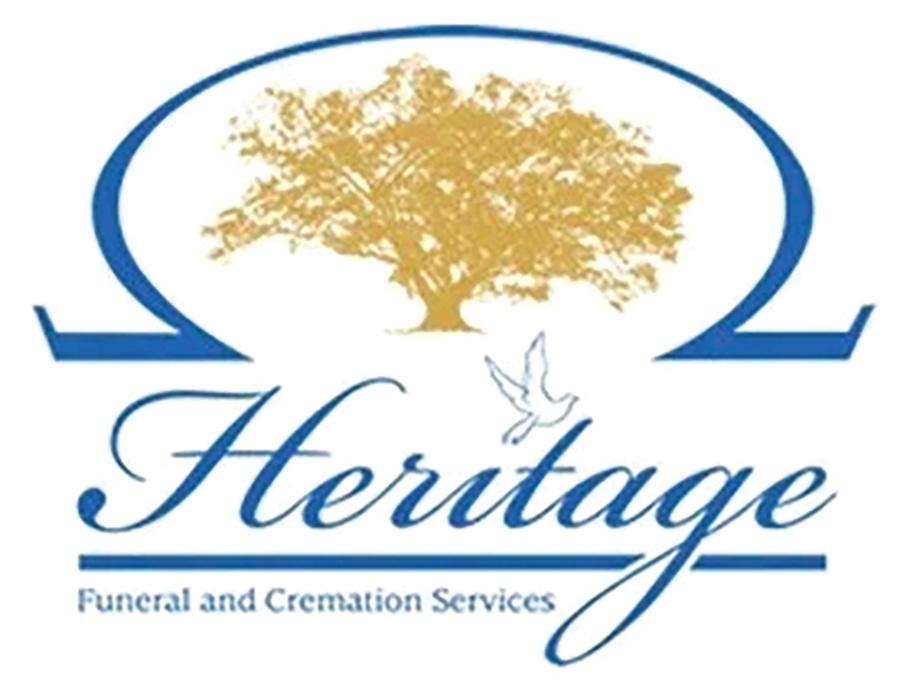
been overcome not by our wishing it so, but by the death and resurrection of Christ our Lord. The Catholic funeral reminds us and brings us into this greater and more important context because only the resurrection of Christ conquers the tomb, only the resurrection of Christ says death is not the final word, only the resurrection of Christ gives the true hope that comforts and heals us in our sorrows.
No person likes to think about death, but I encourage people to at least reflect on the beauty and meaning of the Catholic funeral and let your loved ones know your desires and wishes. Many parish offices can even help people plan out how they wish their funeral to be celebrated, and this information can be kept on file. In the end, the Church has no legal way to compel people to celebrate a loved one’s funeral in a particular way, even if there is information is on file at the parish office, but making one’s desires known and even keeping it on file at the church can be of valuable assistance during what is an emotional, very difficult time.
And it is important. A funeral should respect who a person is, and a person’s faith tradition is an essential component of who we are and the hope we have as Christians.
Beyond the funeral Mass, our Catholic faith has a wonderful tradition of having Masses offered for our dearly departed. This tradition is rooted in our firm belief in the Resurrection. In the Resurrection of Christ, death has been overcome – and just as we pray for one another while here on Earth, so too we can assist our loved ones who have
died with our prayers, and they can also pray for us. The Mass offered for a deceased loved one is a way that the Church gathered offers prayers for a loved one as he or she is brought into the beatific vision – full life with God. Yes, we can pray for our deceased loved ones, and it is important to do so. Scripture often testifies to the power of the prayers of the gathered community. If you wish to have a Mass offered for a loved one, contact your parish office. It is a holy thing to do and a spiritual act of mercy.
So, why is a Catholic funeral important?
The Catholic funeral is at the heart of who we are as Church – a people gathered, saved and redeemed by Christ our risen Lord. It is a witness to a secular world that there is a greater context to both life and death, given our relationship with God as our Father and Creator. A Catholic funeral speaks to the hearts of the people gathered and might even convert hearts that might be hurting or searching.
With His death and resurrection, Christ has conquered the tomb. Thanks to the gift of His Church and its poignant funeral rituals, we can put death in its proper perspective and gain a deeper understanding of our life’s ultimate purpose and the hope of eternal life with our Creator.

FATHER MICHAEL CUMMINS is a priest of the Diocese of Knoxville, Tenn. Ordained in 1995, he serves as pastor of St. Dominic Church in Kingsport, Tenn. He holds a Masters of Divinity and Licentiate in Sacred Theology from the University of St. Mary of the Lake (Mundelein Seminary) in Chicago. He has a deep interest in Christian anthropology and the interaction between faith and culture. This article originally appeared on Word on Fire, online at www.wordonfire.org.
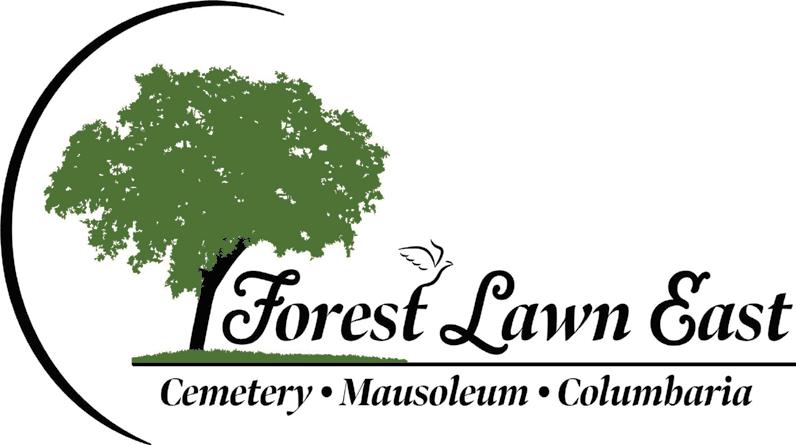
LORENE HANLEY DUQUIN OSV News
Some people know instinctively how to help a grieving person. But for most of us, dealing with someone else’s grief is a little more uncomfortable. We might be at a loss for words. We might be uncertain about what to do. We might not know how to respond to the raw emotions a grieving person exudes.
Our greatest temptation might be to avoid the person or ignore the situation. But that is the worst thing we can do.
The word “bereavement” means “to be torn apart.” It describes the deep emotional wound caused by the death of a loved one. Grief is not an illness or a disease. It is a normal human reaction to the painful void that death creates. Grief is the process by which healing takes place.
Each person experiences grief differently, but most people find themselves struggling through five key areas: accepting the reality of the death, feeling the pain of loss, adjusting to life without the person, repositioning the person as a memory and finding new meaning in life.
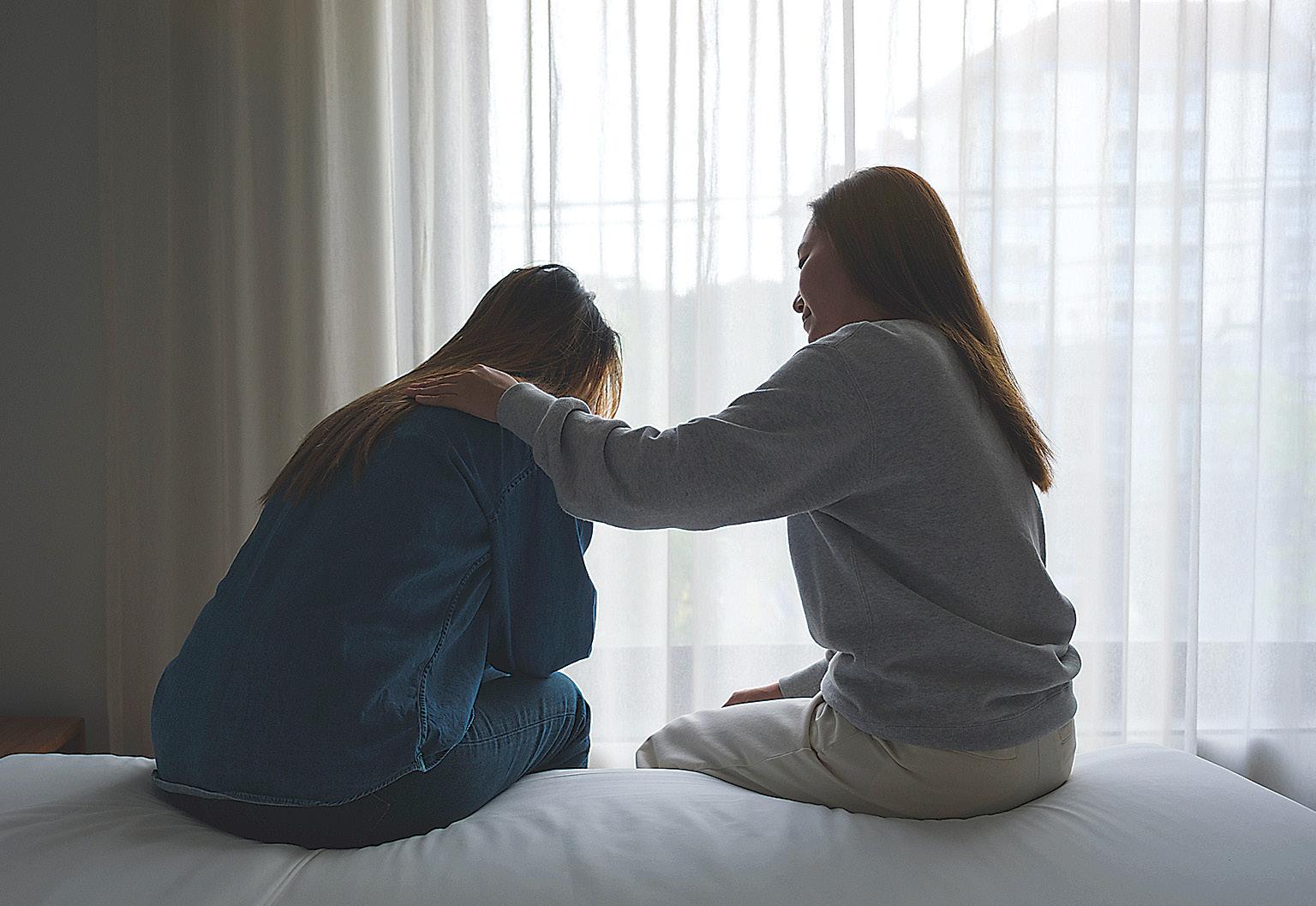
photos for the wake; or designing a program for the funeral Mass.
There is no magic formula for dealing with a grieving person. The best way to reach out to someone will depend on your relationship with that person and where he or she is in the grieving process. If you don’t have a close relationship with the person grieving, you still might be the first person they have seen since the news of their loss.
If the death just occurred, let the person know that you are saddened to hear the news. Expressions of genuine sympathy offer the assurance that someone else cares. You will know instantly whether the grieving person wants to share the details of what happened.
Most people in the early stages of grief struggle with shock and disbelief. Telling the story of what happened allows them to come to grips with the reality of the death. You can help by listening. A good listener doesn’t interrupt or try to change the way the person is feeling. A good listener just listens.
When grieving people begin to share their story, they sometimes get emotional. Assure the person that it’s OK to cry or to express anger or frustration.
Don’t say: “I know how you feel,” “You’ve got to be strong.” “It’s a blessing in disguise.” “God never gives us more than we can handle.”
Instead, say: “I can’t imagine how painful this must be.” “It’s okay to cry.” “What I’m hearing you say is.” “Anytime you want to talk.” Immediately after a death, grieving people are often in a state of shock. They may be uncertain of what needs to be done. You can ask if they need help: Making phone calls to let family members and friends know what happened; shopping for food or supplies; preparing food; caring for children or pets; picking up family members from the airport; helping with arrangements for the wake, funeral or burial; creating memory boards with
A wake allows people to pay their last respects to the deceased and to comfort the bereaved. You can help by sharing your own memories and ways that person impacted your life. These kinds of stories add to the memory bank of grieving family members.
You can also be present for prayers at the wake service or for the recitation of the rosary or Divine Mercy Chaplet. Keep the grieving family members in your prayers.
If you are unable to attend the wake, sending a sympathy card or a Mass card with a heartfelt note can be a real consolation for the family. Some funeral homes also invite online messages.
A grieving person will also appreciate your presence at the funeral. Catholic funerals allow us to give the person to God with renewed hope in the resurrection of the body and eternal life. You can also help by serving as a greeter and distributing funeral programs, taking part in an honor guard, or helping with the liturgy as an altar server, reader or Eucharistic minister. Some parishes offer a funeral meal after the burial. Or you can assist at a family reception by bringing food, helping with set up and clean up, and just being available for any need that arises.
The grieving need a good friend long after the funeral. Within a few weeks, visits, cards, meals and other special attention come to an end. Grieving people often feel alone and afraid. They may experience insomnia, fatigue, headaches and other physical symptoms of grief. They may suffer from mood swings, restlessness, forgetfulness and the inability to concentrate.
What most people do not realize is that the most difficult time for a grieving person is between the fourth and the ninth month after the death. Holidays and anniversaries can be particularly painful. As special days approach, memories of past holidays surface and feelings of loss intensify.
Your presence throughout the year after the death can make a profound difference
disappointments and difficulties, they expect that you will not tell anyone else what they said.
The simple rule of thumb is: Don’t share what anyone has told you unless you have the person’s explicit permission. The only exception is if you suspect that the person needs outside intervention. For example, you might feel the need to seek help for someone if there are signs of excessive weight loss, neglecting basic self-care, the use of drugs or alcohol, or suicidal thoughts. These may be indications of clinical depression.
Grief has no timetable. People grieve at different intensities for different lengths of time. You will know that someone is nearing the end of their bereavement when they show signs that they are adjusting to their new life: They begin to laugh again, they express gratitude, their energy increases, they show interest in doing things, their memories become comforting instead of painful, and they feel a sense of hope for the future.
Until then, remember: A good listener just listens.
Steve Kuzma & Zachary Boan Funeral Service Licensees
Pina
‘At the death of a Christian, whose life of faith was begun in the waters of baptism and strengthened at the Eucharistic table, the Church intercedes on behalf of the deceased because of its confident belief that death is not the end, nor does it break the bonds forged in life.’
Order of Christian Funerals, no.
4
More online

At www.usccb.org/ prayer-and-worship/ sacraments-andsacramentals/ bereavement-andfunerals Get more information on Catholic funeral guidelines, prayers, suggested readings at funeral Masses, and more

At www. catholicsensibility. wordpress.com/ funeral-rites : Read the entire Order of Christian Funerals as well as explanations of each section
Editor’s note: St. Mark Church in Huntersville has produced this guide to funeral planning that is applicable for Catholics. While each pastor sets his own guidelines within the Church’s “Order of Christian Funerals,” we offer this guide as a reference for your family to consider and discuss:
Upon the death of a loved one, please contact the funeral home so that they may assist you in making the necessary funeral arrangements. We encourage parishioners to do pre-planning to make a difficult time easier for your family. Funeral home services are very willing to help you in this process.
Normally, the funeral home will contact the parish to secure the date and time of the funeral. At St. Mark we will do everything we can to accommodate family needs, but please know that as a busy parish the church may be in use for other events during the time period first chosen.
Once the date and time have been decided, the family will be contacted by one of the parish priests or deacons to plan the Mass of Christian Burial and other funeral rites. This involves choosing readings, hymnody and discussing how family and friends might be involved in the funeral liturgy. While there is always an element of the funeral rites that are personalized to reflect the life of the deceased, it should always be remembered that Christians celebrate the funeral rites to offer worship, praise and thanksgiving to God for the gift of a life which has now been returned to God, the author of life and the hope of the just. The Mass, the memorial of Christ’s death and resurrection, is the principal celebration of the Christian funeral (“Order of Christian Funerals,” no. 5).
Catholic funeral rites consist of three principal parts or movements: the vigil or wake, the Mass of Christian Burial, and the burial rites. Each of these is discussed briefly here:
The Vigil for the Deceased is the principal rite celebrated by the Christian community in the time after death and before the funeral liturgy. “At the vigil the Christian community keeps watch with the family in prayer to the God of mercy and finds strength in Christ’s presence,” “Order of Christian Funerals,” no. 56.)
The Vigil can be celebrated at the funeral home, the home of the deceased or at the parish church. During the course of the Vigil service, there will be a brief proclamation of the Word of God, intercessory prayer, and blessing. If someone in the family would like to offer a personal remembrance of the deceased (eulogy) this may be done at the conclusion of the Vigil service.
The funeral liturgy is the central celebration of the Christian community for the deceased. At the funeral liturgy the community gathers with the family and friends of the deceased to give praise and thanks to God for Christ’s victory over sin and death, to commend the deceased to God’s tender mercy and compassion, and to seek strength in the proclamation of the Paschal Mystery. Through the Holy Spirit the community is joined together in faith as one Body in Christ to reaffirm in sign and symbol, word and gesture
that each believer through baptism shares in Christ’s death and resurrection and can look for the day when all the elect will be raised up and united in the kingdom of light and peace (“Order of Christian Funerals,” no. 129).
The funeral Mass includes the reception of the body, the celebration of the Liturgy of the Word, the Liturgy of the Eucharist, and final commendation and farewell.
The rite of reception takes place at the beginning of the funeral liturgy or Mass.
the funeral Mass, those who read, since they are exercising a ministry of the Church, are to be practicing members of the Catholic Church.
At the funeral Mass, the community having been nourished by the Word of God, turns for spiritual nourishment to the Eucharistic sacrifice in which the community with the priest offers to the Father the sacrifice of the New Covenant. The Liturgy of the Eucharist takes place in the usual manner. Members of the family or friends of the deceased should bring the gifts to the altar.
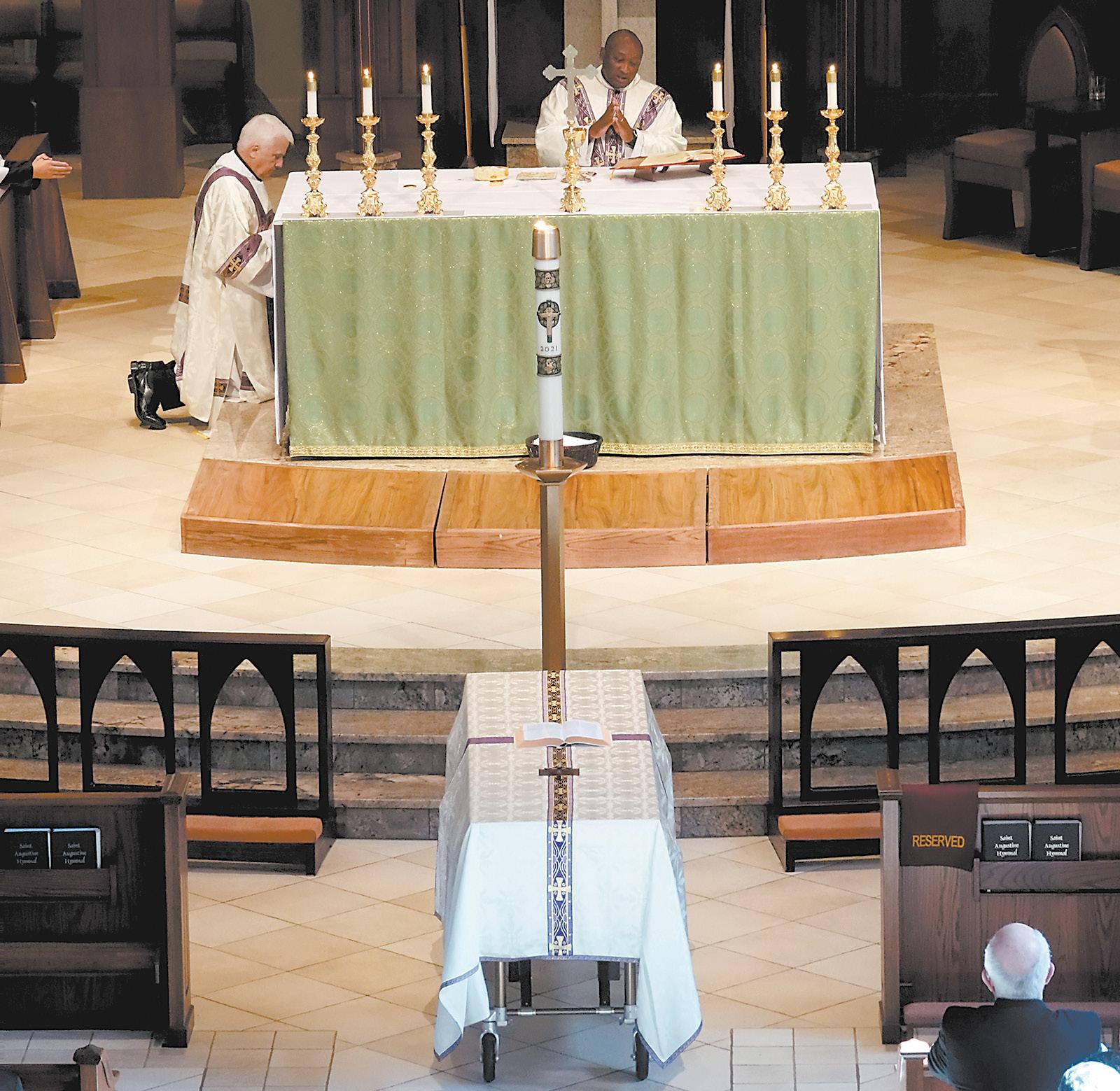
It begins with the greeting of the family, the sprinkling of the coffin with holy water as a reminder of baptism, and the placing of the pall which symbolizes the baptismal garment. If the family so chooses, they may drape the pall over the coffin of the deceased. The entrance procession follows with the ministers leading the coffin and family members into the church.
During the procession an entrance hymn will be sung. The family remains standing with the remainder of the congregation in the pews until the conclusion of the opening prayer. It is our practice at St. Mark to place a crucifix and Bible on the coffin at the conclusion of the entrance procession. These symbols of Christian life are carried in the entrance procession and can be placed on the coffin by family members if the family chooses to do so. Otherwise, they will be placed by one of the ministers.
After the opening prayer, the Liturgy of the Word begins. The readings include an Old Testament reading (during the Easter season the first reading is taken from the Acts of the Apostles or the Book of Revelation), a Responsorial Psalm (sung), a New Testament reading and a Gospel reading.
The Order of Christian Funerals provides a complete listing of the Scripture readings that can be used in the funeral rites, and the family is encouraged to assist in making the selections of readings for the funeral. In addition, members of the family or friends of the deceased are invited to assist by serving as readers. During
During a Mass of Christian Burial, a pall is draped over the coffin of the deceased to symbolize the baptismal garment, and a crucifix and a Bible – symbols of Christian life –are placed on top. Before the final commendation, the deceased is sprinkled with holy water and incensed. The sprinkling is a reminder that through baptism the person was marked for eternal life and incensation signifies respect for the body as the temple of the Holy Spirit.
The final commendation is a final farewell by the members of the community, an act of respect for one of their members, whom they entrust to the tender and merciful embrace of God. During the rite, the body is again sprinkled with holy water and incensed. The sprinkling is a reminder that through baptism the person was marked for eternal life and incensation signifies respect for the body as the temple of the Holy Spirit.
At the conclusion of the funeral liturgy, the procession is formed and the body is accompanied to the place of committal. This final procession of the funeral rite mirrors the journey of human life as a pilgrimage to God’s kingdom of peace and light, the new and eternal Jerusalem.
The rite of committal, the conclusion of the funeral rites, is the final act of the community of faith in caring for the body of its deceased member. In committing the body to its resting place, the community expresses its hope that, with all who have gone before marked with the sign of faith, the deceased awaits the glory of the resurrection. It normally takes place beside the grave or mausoleum where the remains of the deceased are to be placed.
— “Funeral Planning Guide for the Mass of
Church law stipulates that funeral services are a right, not a privilege, of all members of the Church, both the faithful and the catechumens (Canons 1176; 1183, §1). The Order of Christian Funerals also provides for the celebration of funeral rites for children whose parents intended them to be baptized (Canon 1183, §2).
“Christians celebrate the funeral rites to offer worship, praise, and thanksgiving to God for the gift of a life which has now been returned to God, the author of life and the hope of the just. The Mass, the memorial of Christ’s death and resurrection, is the principal celebration of the Christian funeral.” (“Order of Christian Funerals,” no. 5)
“At the funeral liturgy the community gathers with the family and friends of the deceased …
– to give praise and thanks to God for Christ’s victory over sin and death, – to commend the deceased to God’s tender mercy and compassion, – and to seek strength in the proclamation of the paschal mystery. Through the Holy Spirit the community is joined together in faith as one Body in Christ to reaffirm in sign and symbol, word and gesture that each believer through baptism shares in Christ’s death and resurrection and can look to the day when all the elect will be raised up and united in the kingdom of light and peace.” (“Order of Christian Funerals,” no. 129)
It is an unfortunate reality that many baptized Catholics no longer practice their faith and may consider themselves to have been away from the Church for too long to be ever welcomed again by the Church. Such individuals or their families may feel uncomfortable in a church and ultimately decide against having a Catholic funeral. By our baptism, however, we have been made equal in dignity before the Lord, and the Church, our Mother, bears the suffering of all those who became her sons and daughters through baptism. Thus, the Church offers funeral rites (including a funeral Mass) even for nonpracticing Catholics and, under certain circumstances, for non-Catholic Christians.
Although the deceased may not have participated fully in the life of the Church on earth, the Church longs for her separated children to share in Christ’s blessings. She desires to pray for them and with their loved ones so that their sins may be forgiven and they may dwell forever in the presence of God in heaven.
— “Catholic Funeral Planning Guide,” Diocese of Portland, Maine; Canon 1183, §3
Depending on the possibility of your collecting the remains, the baby should be named and buried. If you are in a hospital, the remains of the baby will be sent to the pathologist. You should request that you receive the remains. Most hospitals have little caskets which they offer you. If the baby is more developed you may need to obtain a larger casket from a funeral director. You should ask your pastor for a Mass of Christian Burial and bury the baby appropriately and in a marked grave.
— “Catholic Funeral Guide,” St. Michael Church in Gastonia
‘As you consider the funeral, try to remember that planning a funeral is not a burden, but a privilege. Think of the funeral as a gift to the person who died as well as his friends and family. It is a chance for all to think about and express the value of the life that was lived. It is also a chance to say goodbye.’ “Preparing for Funeral Liturgies,” St. Matthew Church in Charlotte

‘Now and at the
A mourner has some quiet time at the grave of a
We prepare for eternal life by choosing to love and follow God now, in our daily lives and decisions. For example, through prayer and regular reception of the sacraments, especially confession and the Eucharist, we obtain grace to live in ever-deeper communion with God and with one another in lives of faith, charity and justice. We ask for Our Blessed Mother’s help now, and we entrust ourselves to her further as we “surrender ‘the hour of our death’ wholly to her care.” (Catechism of the Catholic Church, 2677) — USCCB
n Save and/or purchase insurance to properly provide for a casket, funeral services and burial.
n Remember that the Church desires the full body to be present for the Mass of Christian Burial and for the body to be buried in a cemetery.
n Leave instructions that someone will call the priest when death seems close.
n Ensure that someone will call the priest for the last rites (confession, anointing and Communion) before death.
n Ensure that someone will call the priest when death occurs.
n The Prayers for the Dead are to be prayed. (Editor’s note: See pages 12-13B for more info.)
n The body is prepared for burial by the funeral directors.
n Arrange for someone to meet with the funeral director to begin preparing for the funeral rites.
How should I prepare for a good
n Live a Catholic sacramental life.
n Develop a Catholic understanding of life and death.
n Pray to St. Joseph, patron of a happy death.
n Develop an understanding of the Catholic funeral rites.
n Prepare with a good confession, the anointing of the
sick, and Communion as “Viaticum.” Make sure someone calls the priest. If you are going to have surgery which requires general anesthetic, ask the priest to hear your confession and administer the sacrament of the sick before you go to the hospital.
n If you are going to be in the hospital or any nursing care facility, be sure to list the parish priest, deacon and others from the parish whom you wish to visit; otherwise, they will not be able.
n Make advanced plans with your parish priest for the funeral rites; read the policies of your parish for funerals.
n Save for the expenses of a proper Catholic funeral; most people have insurance policies for this.
n Talk with family members and your attorney. Be sure your legal documents give a Catholic understanding of caring for the sick and dying. Be sure your will provides for food and water to be given until you cannot assimilate it as a part of ordinary care when appropriate. Appropriate ordinary means of life support should also be given where there is hope of cure. Think of appointing a Health Care Power of Attorney with your instructions to be followed. (Editor’s note: See pages 14-17B for more info.)
n Make provisions for your funeral in your will; remember that your requests must be in agreement with your parish priest and the Church.
n Contact a funeral home to make pre-arrangements.
n Purchase a burial site.
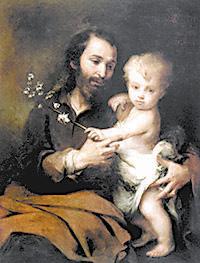
What a blessed death to see God before you die and for God Himself to tell you to go. This was Joseph’s gift from his Son, who would hand His father over to His Father. Thus has Christ entrusted Joseph to have particular intercessory power for all those at the moment of death.
More online

— “Catholic Funeral Guide,” St. Michael Church in Gastonia
At www.yearofstjoseph.org : Learn more about St. Joseph’s virtues and titles, find intercessory prayers to St. Joseph, and more educational resources from the Diocese of Charlotte’s Year of St. Joseph
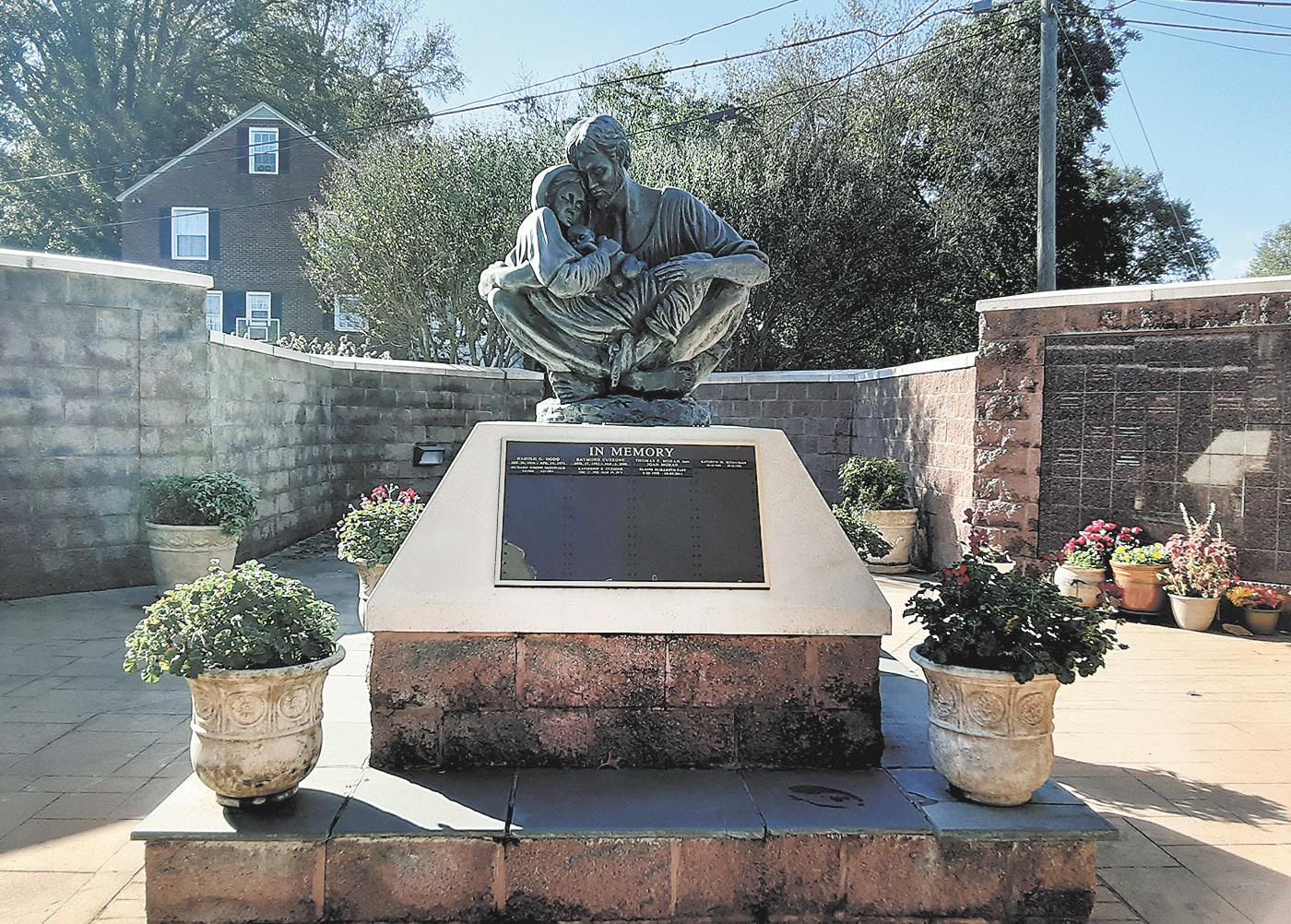
In general in the United States, burial options include: in-ground burial with monument graves, flush marker graves, lawn crypts or family estate lots; above-ground burial in mausoleums; and cremation with interment in mausoleum niches, columbaria, or in-ground in cremation graves or lawn crypts.
Church law (Canon 1240) stipulates, “Where possible, the Church is to have its own cemeteries or at least areas in civil cemeteries that are designated for the deceased members of the faithful and properly blessed.”
Because of limited space at many parishes across the diocese, a cemetery on parish grounds is not always practicable. Identifiably Catholic sections in public cemeteries have become an alternative option, as well as columbaria on parish grounds. But columbaria for cremated remains cannot be the only option provided.
Diocesan policy states: “If a parish wishes to make a columbarium available to the faithful, it will also make available at the same location as the columbarium, spaces for burial of the bodies of the deceased. The number of spaces available for placing cremated remains in a columbarium shall not be more than the number of spaces available for burial of bodies of the deceased. The expectation is that more spaces will be available for burial of the bodies of the deceased than spaces in a columbarium for the placing of cremated remains, since burial of the body is the norm of Christian burial.”
At www.catholicnewsherald.com : Read the Diocese of Charlotte’s policy on cemeteries and columbaria
Every Catholic cemetery features a crucifix as a reminder of Christ’s victory over death and the promise of our own resurrection. Pictured is Sacred Heart Parish cemetery in Salisbury. FILE | CATHOLIC NEWS HERALD

‘The Church earnestly recommends that the pious custom of burying the bodies of the deceased be
observed;
nevertheless, the Church does not prohibit cremation unless it was chosen for reasons
contrary to Christian doctrine.’ Canon 1176, §3
Catholic cemeteries are important in the life of the Church.
St. Frances of Rome Mission, Sparta
St. Helen Mission, Spencer Mountain (parishioners only)
St. Francis of Assisi Church, Jefferson
Cemeteries with columbaria
Our Lady of Annunciation, Albemarle
Immaculate Conception Mission, Canton
Holy Family Church, Clemmons (parishioners only)
Holy Cross Church, Kernersville
Sacred Heart Church, Salisbury
St. James the Greater Church, Concord
St. John the Evangelist Church, Waynesville
St. Eugene Church, Asheville (parishioners only)
St. Elizabeth Church, Boone
Sacred Heart Church, Brevard (full)
St. Joan of Arc Church, Candler (full)
St. Gabriel Church, Charlotte (full)
St. Matthew Church, Charlotte
St. Peter Church, Charlotte
St. Thomas Aquinas Church, Charlotte
St. Vincent de Paul Church, Charlotte (full)
Immaculate Heart of Mary Mission, Hayesville
St. Aloysius Church, Hickory
Christ the King Church, High Point
Immaculate Heart of Mary Church, High Point (full)
Our Lady of the Mountains Mission, Highlands
St. Paul the Apostle Church, Greensboro
St. Pius X Church, Greensboro (full, with waiting list)
St. Margaret of Scotland Church, Maggie Valley (full)
St. Luke Church, Mint Hill (full)
St. William Church, Murphy
St. Margaret Mary Church, Swannanoa
St. Leo the Great Church, Winston-Salem (full)
Public cemeteries with Catholic sections
Stanly Gardens, Albemarle
Sharon Memorial Park, Charlotte
Westlawn Cemetery, Clemmons
Mt. Zion Community Cemetery, Cornelius
Northlake Memorial Gardens, Huntersville
Forest Lawn East Cemetery, Matthews
If cremation is desired for legitimate reasons, the Church prefers that the funeral liturgy occur before cremation. Cremated remains are always to be buried or interred.
How should a Catholic plan for cremation?
First , discuss your questions with a knowledgeable pastor or parish staff person.
Second, if your decision is to be cremated, make your wishes known in your will or in documents designed to help plan your funeral and burial. Provide copies of these documents to family members, your pastor, funeral home, or Catholic cemetery.
Lastly, as you plan, keep in mind the therapeutic value to your family of celebrating the full funeral liturgy with the body present.
When should cremation take place?
The Church prefers that cremation take place after the full funeral liturgy with the body. Sometimes, however, it is not possible for the body to be present for the funeral liturgy. When extraordinary circumstances make the cremation of the body the only feasible choice, pastoral sensitivity must be exercised by all who minister to the family of the deceased. Think of cremation of the body and committal of the remains as the conclusion of a funeral with the body.
What does a Catholic do with the cremated remains after the funeral liturgy is completed?
The Church requires that the cremated remains be either buried in the ground in a cemetery or placed in a mausoleum or columbarium, preferably in a Catholic cemetery.
The Church recommends that the place of burial or entombment be permanently memorialized with a traditional memorial stone, crypt/niche front, or bronze plaque, minimally marking the name and dates of birth and death of the deceased person. Since the human body was the temple of the Holy Spirit during life, was fed at the Eucharistic table, and will share in the bodily resurrection, contemporary cultural practices like scattering the cremated remains over water or from the air or keeping the cremated remains at home are not considered reverent forms of disposition that the Church requires. Other practices such as commingling cremated remains or dividing up cremated remains among family members or friends are not acceptable for Catholics.
— www.catholic-cemeteries.org

CATHOLIC NEWS SERVICE
WASHINGTON, D.C. — In 1963, the Vatican Congregation for the Doctrine of the Faith issued an instruction permitting cremation as long as it was not done as a sign of denial of the basic Christian belief in the resurrection of the dead.
The permission was incorporated into the Code of Canon Law in 1983 and the Code of Canons of the Eastern Churches in 1990.
Church law, however, had not specified exactly what should be done with “cremains,” so several bishops’ conferences asked the congregation to provide guidance.
That request led to “Ad resurgendum cum Christo” (“To Rise With Christ”), an instruction “regarding the burial of the deceased and the conservation of the ashes in the case of cremation,” issued Oct. 25, 2016. The document was approved by Pope Francis after consultation with other Vatican offices and with bishops’ conferences and the Eastern Churches’ synods of bishops.
The document has prompted many Catholics to ask whether it changes any regulations about cremation. Catholic News Service provided some of those questions to the staff of the U.S. Conference of Catholic Bishops’ Secretariat of Divine Worship to be answered:
Q: The 2016 document from the Congregation for the Doctrine of the Faith spells out regulations regarding cremation. Does it change anything in how the Church in this country has regulated this issue?
A: No, the document from the CDF doesn’t change anything for us in this country. For example, we already have permission to have a funeral Mass in the presence of cremated remains. What the instruction does do, however, is reiterate the Church’s preference for the burial of the body in normal circumstances, and, when cremation is necessary, its insistence that the remains be properly interred.
Q: If the document says that traditional burial is preferred, does that mean cremation is wrong?
A: If the Church saw cremation as “wrong,” it wouldn’t permit it. Sometimes cremation can truly be necessary. However, the ancient custom and the preference of the Church is to bury the body, whenever possible.
Q: What should I do if I’ve already scattered the ashes?
A: We can’t change the past, of course, and if you truly didn’t realize at that time that it shouldn’t be done, then you shouldn’t burden yourself
with guilt. Remember that what happens to a person’s body after death has no bearing on what happens when that person’s soul meets the Lord on judgment day. However, you might wish to offer extra prayers for the person’s happy repose.
Q: If I plan to donate my body to science, after which it will be cremated, is that OK? What if the laboratory disposes of these ashes?
A: This would seem to be a valid reason for cremation. However, it would be important to make sure that arrangements are made for a funeral Mass, and that a trusted relative or friend is able to receive the remains and see to their proper burial.
Q: How do I convince my dad to let me bury my mother’s ashes, which he now has at home?
A: Only you would know the best way to approach a situation like that, and it would depend a lot on his reasons for keeping the remains and on his own personal faith. Perhaps making him aware of the Church’s preference would be enough to convince him? Or the assurance that his own earthly remains will one day be buried alongside those of his wife? Also, the Vatican’s instruction itself articulates some compelling reasons: “The reservation of the ashes of the departed in a sacred place ensures that they are not excluded from the prayers and remembrance of the Christian community. It prevents the faithful departed from being forgotten, or their remains from being shown a lack of respect…” (5).
Q: Many people die and are never buried properly. Perhaps they die at sea or in an explosion or whatever. Why is the Vatican worried about something like this when there are so many other problems in the world?
A: This instruction isn’t concerned with those kinds of situations. Burial at sea is necessary at times, as is cremation. The main purpose for this instruction is to help foster a healthy respect for the human body, even after death, especially in light of the move in recent years away from traditional burial in favor of more expedient and economical means. Where contemporary culture today may well question what difference it makes, the Church is reminding us to recall that the human body is an integral part of the human person deserving of respect even after death. The earliest Christians buried the bodies of their dead, and this set them apart from many of their contemporaries. We bury our dead out of reverence for God our Creator, and as a sign that we look forward to the resurrection on the last day.
‘Although cremation is now permitted by the Church, it does not enjoy the same value as burial of the body. The Church clearly prefers and urges that the body of the deceased be present for the funeral rites, since the presence of the human body better expresses the values which the Church affirms in those rites.
Order of Christian Funerals’ Appendix on Cremation, no. 413
‘The cremated remains of a body should be treated with the same respect given to the human body from which they come. This includes the use of a worthy vessel to contain the ashes, the manner in which they are carried, and the care and attention to appropriate placement and transport, and the final disposition. The cremated remains should be buried in a grave or entombed in a mausoleum or columbarium. The practice of scattering cremated remains on the sea, from the air, or on the ground, or keeping cremated remains at the home of a relative or friend of the deceased are not the reverent disposition that the Church requires.’
Order of Christian Funerals’ Appendix on Cremation, no. 417
Use these worksheets to plan your funeral service or as a guide to discuss your wishes with your family
Preparing and planning now can assure the type of funeral service appropriate for your loved one. Often times pre-planning and even pre-
Full
funding your funeral arrangements can not only provide peace-of-mind to you, but also to those who suffer emotionally at the time of their loss.
Date of birth: ________________________________________________________ Place of birth: _____________________________________________________________________________________________________
Father’s name: _________________________________________________________________________ Mother’s maiden name: __________________________________________________________________________ Education: ______________________________________________________________________________________________________________________________________________________________________________
Marital Status: ____ Married ____ Never Married ____ Widowed ____ Divorced Married to: _____________________________________________________________
Children: ________________________________________________________________________________________________________________________________________________________________________________
Places lived: ___________________________________________________________
Employment: __________________________________________________________
Civil, fraternal and other involvement: _____________________________________________________________________________________________________________________________________________________
If you are a veteran, complete this information or attach copy of discharge: Veteran of which war? _________________________________________________
Service Number: _____________________ VA Claim Number: ______________
Branch of Service: ____________________ Rank: __________________________
Place of Enlistment: _______________________ Date of Enlistment: __________ Place of Discharge: ________________________________ Date of Discharge/Retirement: __________________________________________ County in which my discharge is on file with Clerk/Registrar of Deeds: ______
People to be notified immediately: ________________________________________________________________________________________________________________________________________________________
Obituary announcement to be sent to: _____________________________________________________________________________________________________________________________________________________
IMPORTANT DOCUMENTS
Collect the following important papers and documents, and tell your family where they are kept: * Military discharge
* Will * Attorney * Insurance policies * Mortgage(s) and deeds * Birth certificate * Bank account information * Stocks/bonds * Safe deposit box * Cemetery deed * Living will or advance directive * Durable Power of Attorney * Health Care Power of Attorney * Computer/website passwords
FUNERAL PRE-PLANNING DETAILS
I have a pre-need funeral trust established with: I have a funeral insurance policy with: I have looked at caskets/urns/burial vaults and would prefer:
I have considered a marker or monument and would prefer: Memorials may be made to:
CEMETERY INFORMATION
Cemetery preferred: _________________________________________________________________________
I ____ own ____ prefer
Address: _______________________________________________________________
Phone: __________________________________________
Type of burial rights: ____ Ground burial ____ Columbarium ____ Mausoleum ____ Lawn crypt
If owned, name of burial right holder is/are: ____________________________________________________________________________________________________________________________
Legal description of burial rights: ____ Lot # ____ Section ____ Row ____ Block Grave number: _______________________________________
CREMATION
I would prefer to be cremated. ____ Yes ____ No
If cremation, what type of disposition? ____ Burial ____ Niche Cremation vault: ____ Yes ____ No
Donation of organs or body? Describe: ____________________________________________________________________________________________________________________________________________________
FUNERAL HOME: _________________________________________________________________________ Address: ________________________________________________________________________________________ Phone: _____________________________________________________________________
PLACE OF SERVICE: (Church name) (Address) ____ Funeral Mass ____ Memorial Mass ____ Church Service ____ Cemetery/Chapel ____ Graveside
Casket: ____ Open during Wake ____ Closed during Wake
Type of casket: ____ Wood ____ Metal ____ Cremation coffin ____ Other: _________________________ Cremation – Type of urn: ____ Wood ____ Bronze ____ Marble ____ Other: _________________________
Clergy (if preferred): ______________________________________________________________________________________________________________________ Musical selections (in keeping with the liturgy; please consult priest or music minister):
Liturgy of the Word desired readings (please consult priest or parish office): Old Testament: _________________________________________
Responsorial Psalm: ____________________________________ New Testament: ________________________________________ Gospel: ________________________________________________
Lector 1: __________________________________________________________________________________ Lector 2: ________________________________________
Prayers of the Faithful: ____________________________ Offertory Gifts: ___________________________________
Will family place a pall on casket? ____ Yes ____ No ____ Cross or Bible placed on casket? Use incense? ____ Yes ____ No
WAKE/COMMITTAL SERVICE
Wake/Rosary Service: ____ Yes ____ No Location: _______________________________________ Officiant: _________________________________________________________________________________
Viewing: ____ Public ____ Private ____ None
Participating organizations at Wake or Committal Service (military, fraternal, lodge, etc.): Flag (Committal Service only): ____ Draped ____ Folded Presented to: _______________________________________________________________
Clothing preference: ____ From current wardrobe ____ New ____ Other: ___________________________________________________ Description/color: _______________________________________________________________________________
Personal accessories: ____ Wedding band ____ Stays on ____ or Returned to: ___________________________________________ ____ Eyeglasses ____ Stays on ____ or Returned to: ___________________________________________ ____ Other ____ Stays on ____ or Returned to: ___________________________________________
Pallbearers:
(Name) (Relationship) (Phone #)
(Name) (Relationship) (Phone #)
(Name) (Relationship) (Phone #)
(Name) (Relationship) (Phone #)
(Name) (Relationship) (Phone #)
(Name) (Relationship) (Phone #)
(Name) (Relationship) (Phone #)
(Name) (Relationship) (Phone #)
SPECIAL INSTRUCTIONS
(Include floral preferences, notes, awards, life achievements, pictures, obituary requests, items to be placed with the remains, etc.)
CAROL GLATZ Catholic News Service
VATICAN CITY — The Vatican Dicastery for the Doctrine of the Faith has upheld a rule mandating that the ashes of the deceased be preserved in a consecrated place, but it also said family members could request “a minimal part of the ashes” be kept in a sacred place “of significance for the history of the deceased person.”
The dicastery also said a parish or diocese could establish “a defined and permanent sacred place” where the cremains of multiple people would be commingled and preserved together.
The permission came in a “note” from the dicastery in response to a letter from Italian Cardinal Matteo Zuppi of Bologna requesting clarification about the preservation of the ashes of the deceased after cremation. The Vatican published the note signed by Cardinal Víctor Fernández, dicastery prefect, Dec. 12, 2023; it said it was approved by Pope Francis Dec. 9, 2023.
Cardinal Zuppi said in his letter, dated Oct. 30, 2023, that his archdiocese had been seeking “to give a Christian response to problems arising from the increasing number of people desiring to cremate the bodies of the deceased and scatter their ashes in nature.”
An archdiocesan commission he set up to study the matter wanted to ensure people were not compelled to scatter ashes due to the economic costs of burial, and it wanted to give guidance regarding what to do with ashes once the term for their preservation in a cemetery loculus or niche had expired. In most Italian cemeteries, if a family does not renew the lease on a burial spot, the bones or ashes are transferred to a communal ossuary or cinerary.
The cardinal asked that, given “the canonical prohibition against scattering the ashes of the deceased, is it possible to prepare a defined and permanent sacred place for the commingled accumulation and preservation of the ashes of the baptized, indicating the basic details of each person so as not to lose the memory of their names, similar to what occurs in ossuaries.”
He also asked if a family may be allowed “to keep a portion of their family member’s ashes in a place that is significant for the history of the deceased.”
Referring to its 2016 instruction, “Ad resurgendum cum Christo” (“To Rise with Christ”), regarding the burial of the deceased and the conservation of the ashes in the case of cremation, the dicastery’s new note upheld its recommendation to preserve ashes in a special urn and to keep ashes “in a sacred place, such as a cemetery, or in an area dedicated to this purpose, provided that it has been so designated by the ecclesiastical authority.”
“An attitude of sacred respect” must be had toward the ashes of the deceased person, which are to be kept in “a sacred place suitable for prayer,” it added.
The faith teaches that “the body of the resurrected person will not necessarily consist of the same elements that it had before it died. Since it is not a simple revivification of the corpse, the resurrection can occur even if the body has been totally destroyed or dispersed,” it said. This is why “in many cinerary urns, the ashes of the deceased are conserved together and are not stored separately.”
Therefore, the dicastery said, “a defined and permanent sacred place can be set aside for the commingled accumulation and preservation of the ashes of deceased baptized persons, indicating the identity of each person so as not to lose the memory of their names.”
In addition, it said, “the ecclesiastical authority, in compliance with current civil norms, may consider and evaluate a request by a family to preserve in an appropriate way a minimal part of the ashes of their relative in a place of significance for the history of the deceased person.”
However, the authorization can be given only if “every type of pantheistic, naturalistic or nihilistic misunderstanding is ruled out and also provided that the ashes of the deceased are kept in a sacred place,” the dicastery said.
The dicastery had issued an instruction in 1963 permitting cremation as long as it was not done as a sign of denial of the basic Christian belief in the resurrection of the dead. The permission was incorporated into the Code of Canon Law in 1983 and the Code of Canons of the

Eastern Churches in 1990.
However, since Church law had not specified exactly what should be done with “cremains,” the dicastery provided further guidance with the 2016 instruction, “Ad resurgendum cum Christo” (“To Rise with Christ”).
That instruction emphasized the Catholic Church’s recommendation to follow “the most ancient Christian tradition” of the pious practice of burying the dead in cemeteries or other sacred places, as it is considered one of the corporal works of mercy and, mirroring the burial of Christ, more clearly expresses hope in the resurrection when the person’s body and soul will be reunited.
Anonymous burial or scattering of ashes is not compatible with the Christian faith, according to the instruction. Preserving the ashes of the departed in a sacred place “ensures that they are not excluded from the prayers and remembrance of their family or the Christian community” and “it prevents any unfitting or superstitious practices.”
“The conservation of ashes of the departed in a domestic residence is not permitted,” the 2016 instruction said. “Only in grave and exceptional cases dependent on cultural conditions of a localized nature, may the Ordinary, in agreement with the Episcopal Conference or the Synod of Bishops of the Oriental Churches, concede permission for the conservation of the ashes of the departed in a domestic residence.”
“The ashes may not be divided among various family members and due respect must be maintained regarding the circumstances of such a conservation,” it said.
Anonymous burial or scattering of ashes is not compatible with the Christian faith, according to the instruction. Preserving the ashes of the departed in a sacred place ‘ensures that they are not excluded from the prayers and remembrance of their family or the Christian community’ and ‘it prevents any unfitting or superstitious practices.’
CATHOLIC NEWS HERALD catholicnews@rcdoc.org
CHARLOTTE — “It was a tragic day, a very tragic day. I lost someone who I cared dearly for, who I loved with all my heart.”
That is how Joe, a Catholic Charities Diocese of Charlotte client, remembers the day in 2014 when his wife Lisa suddenly died. That morning, Lisa got dressed as usual, told Joe that she loved him, and headed off to work. Fifteen minutes later, she was hit and killed by a car.
The shock of her death was followed by the nearly overwhelming details of what came next: burial.
For many families, the cost of burying a loved one is a substantial financial challenge. The average cost of a funeral ranges from $7,000 to $10,000 – a major obstacle for many people struggling just to make ends meet. The unexpected expense compounds the burden they already face in grieving for their loved one.
Our Catholic faith teaches us that it is an important corporal work of mercy to bury the dead.
Catholic Charities’ Burial Assistance Program is a tangible way in which Catholics across the Diocese of Charlotte are helping families without the means to bury their dead with dignity.
The program’s roots date back to 1994, when Mecklenburg County stopped paying to bury the poor. Catholic Charities teamed up with concerned citizens, social workers, funeral home directors and the City of Charlotte’s cemetery director to set up a burial plan for needy county residents. They agreed to work together to provide funeral and burial or cremation services to indigent families.
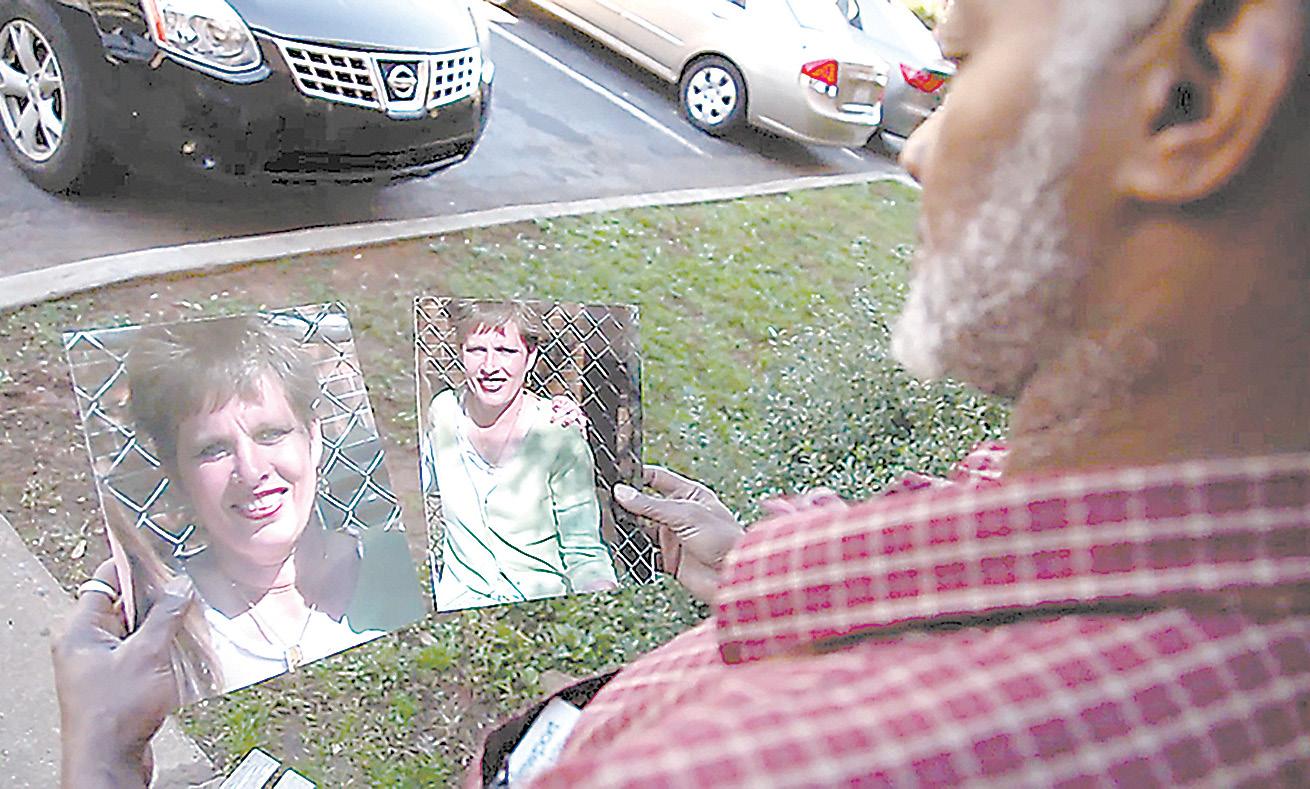
In the past year, Catholic Charities helped to bury 199 people.
The program has since grown to encompass all of western North Carolina and is now providing this service throughout the entire diocese.
The program serves families who have no insurance, are unable to negotiate financial arrangements with a funeral home, or cannot pay the costs associated with traditional death expenses.
In the last year, Catholic Charities assisted with 199 dignified burials for families in need across the diocese.
Sylvia Sekle, direct assistance coordinator for Catholic Charities in the Charlotte Regional Office, shares, “While it can be very hard emotionally to help families navigate this time of grief in their life, it does give me peace knowing we are making it just a little bit easier.”
Catholic Charities is seeing a greater need, Sekle says, “and we believe that is due to COVID-19. Not just as a cause of their loved one passing, but also the financial impact of COVID on their finances and their ability to be able to provide a burial for their loved one.”
She notes that, “While no one is ever prepared for death, I am grateful that we are able to offer them some sort of peace and ease their financial burden.”
Recalls Joe, “I didn’t know where to turn. I didn’t know what to do. I went to Grier’s Funeral Home, and he told me about Catholic Charities.
“The young lady at Catholic Charities was outstanding. She was nice, kind, considerate – like people should be. She didn’t treat me like I was a nobody. She treated me like I was a man.”
Catholic Charities provides the social service support and eligibility verification for the program at no cost.
Financial assistance is provided through charitable contributions from individuals, churches and other civic organizations when families are unable to cover the cost. In addition, local funeral homes play a key role in partnering with Catholic Charities in providing dignified burials.
Catholic Charities’ CEO Dr. Gerard A. Carter is grateful for the generous support.
“Donors provide us with the funds needed to provide this ministry to those who mourn the loss of a loved one and the funeral homes are key partners. In the name of the Church –and because of the support of people of goodwill – together we can carry out this important work of compassion to families who are grieving the loss of their loved one.”
Joe still gets emotional when he talks about his love for Lisa and the help he received. He says Catholic Charities helped him through his grief and reassured him that Lisa would be laid to rest with dignity.
“They gave me the feeling of hope that everything was going to be OK, and it was.”
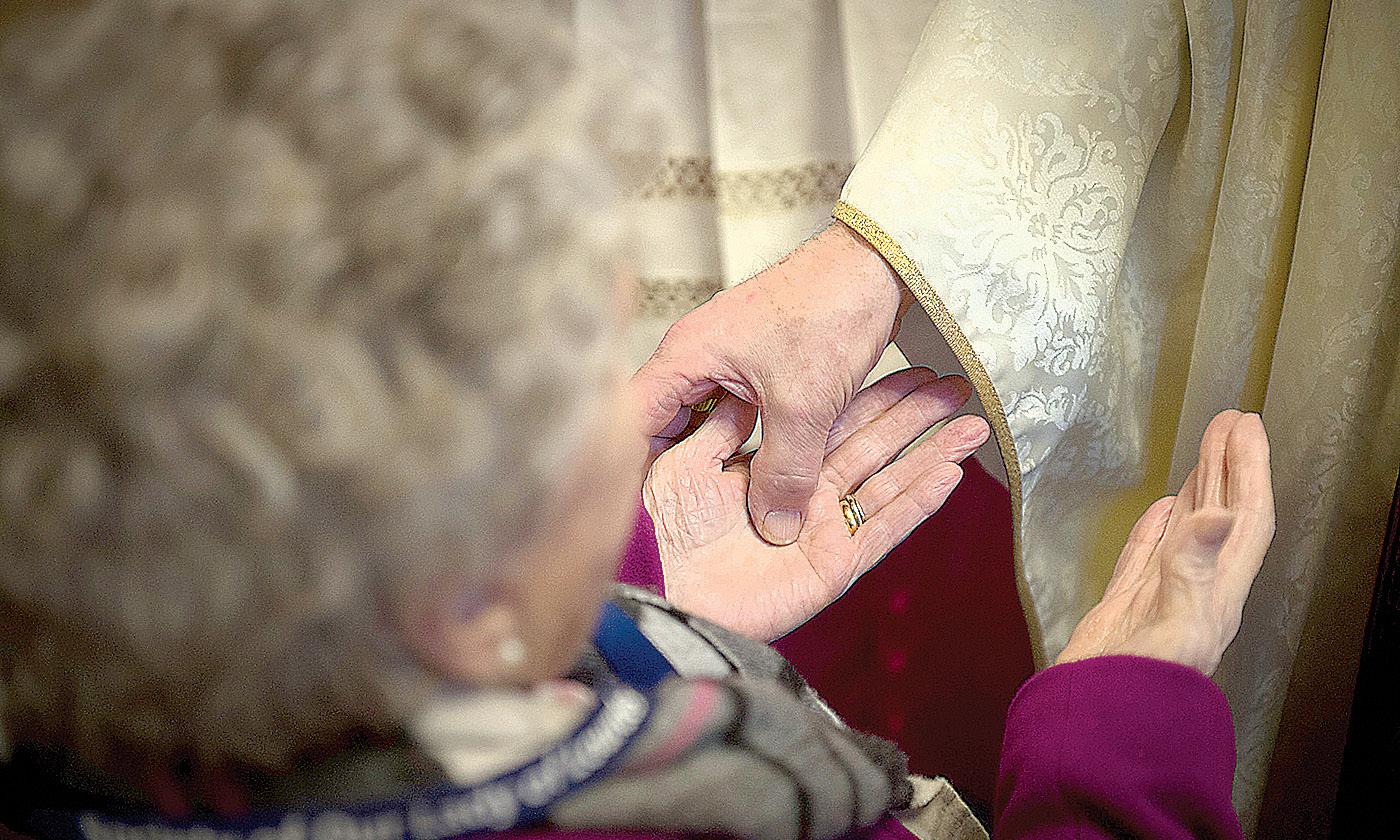
A gift of grace in the Holy Spirit
Anointing of the Sick is a sacrament in which a person who is ill is anointed with blessed oil and prayed over by a priest.
It is meant not only for people who are dying, but for anyone who seeks forgiveness, comfort, and strength from Christ the Divine Physician. If you are suffering serious illness or facing surgery, or if you are an elderly person whose frailty has become more pronounced, you are encouraged to seek this sacrament.
The hoped-for effect is that – if it is God’s will – the person be physically healed of illness. But even if there is no physical healing, the primary effect of the sacrament is a spiritual healing by which the sick person receives the Holy Spirit’s gift of peace and courage to deal with the difficulties that accompany serious illness or old age.
The last rites (also known as the Commendation of the Dying) are the last prayers and ministrations given, when possible, shortly before someone’s death. In general, under normal circumstances, last rites for a Catholic might include the sacraments of Penance, Anointing of the Sick, and Holy Communion. When Holy Communion is administered to a Catholic who is dying, it is called “viaticum” – food for the final journey, Christ accompanying us with the hope of resurrection with the food of heaven.
REQUIREMENTS
Any baptized Catholic who has reached the age of reason (usually around the age of 7) and is in danger due to sickness or old age, facing surgery, or near death may request the sacrament of Anointing of the Sick. Search the Diocese of Charlotte’s parish directory online at www.charlottediocese.org to find a priest near you.
‘Is anyone among you sick? Let him call for the elders of the church, and let them pray over him, anointing him with oil in the name of the Lord.’
— James 5:14
If you have a sacramental emergency (a Catholic who is in imminent danger of dying and wishes to receive last rites), call the church nearest your location, ask for a priest and tell them it is a sacramental emergency.
No. This sacrament is certainly used for that purpose, but it is also efficacious for people who are facing surgery, awaiting a diagnosis or experiencing serious health concerns.
Reception of the sacraments when a Catholic is near death is called “last rites.” The last rites (also known as the Commendation of the Dying) are the last prayers and ministrations given, when possible, shortly before someone’s death. In general, under normal circumstances, last rites for a Catholic might include Anointing of the Sick, as well as the sacraments of Penance and Holy Eucharist.
Can you be anointed only once?
No. A person can receive this sacrament multiple times.
Do you have to be Catholic to receive this sacrament?
A baptized non-Catholic can receive this sacrament in certain limited situations, particularly if they are at the point of death. Contact a parish near you for more information.
Many
parishes have bereavement ministries or grief support groups. Check your parish’s website or bulletin, or call the parish office.
The Catechism of the Catholic Church states: “From the beginning the Church has honored the memory of the dead and offered prayers in suffrage for them, above all the Eucharistic Sacrifice, so that, thus purified, they may attain the beatific vision of God” (1032).
It is normal to have a Mass offered as soon as possible for the deceased. Most people leave provision for this in their wills. When possible the “month’s mind,” a Mass on the one-month anniversary and then on other anniversaries, is a good practice. If Masses are not available on those days in your parish, your parish priest may be able to send them to be offered in the missions.
Arranging a Mass for a deceased loved one is easy. Simply contact a Catholic church in the community where you would like to have the Mass celebrated, or at your own parish if you would like to attend the Mass.
A stipend of usually $5-$20 per Mass is offered for the priest who will offer the Mass. Every parish has a Mass offering book, usually kept at the parish secretary’s desk, so that when you call or stop by the parish it is easy to ask for a Mass intention.
Sometimes you may be able to pick a specific day to have the Mass celebrated in memory of the deceased, but at times you may have to accept whatever date is available.
You will receive a Mass card from the parish with the time, date and church name where the Mass will be offered. You can give the Mass card to the family of the deceased so they know when the Mass will be offered in their loved one’s honor.
Don’t forget to mark down the details on your own calendar so that you can attend the Mass or remember to offer your prayers on that day.
Why is it important to have a grave?
Our cemeteries are places of great sign value as were the catacombs of old.
The grave and the marker are visible signs that a person did live and that it mattered that he or she lived. Years from now someone will walk by our graves and remember us and that it was important that we lived and died. Cemeteries are places of catechesis about death and they are places of prayer in the context of the communion of saints and our waiting for the final coming of the Lord.
We visit the grave often to pray for the deceased and we decorate the graves regularly, especially on Nov. 2, All Souls’ Day.
— “Catholic Funeral Guide,”
St. Michael Church in Gastonia
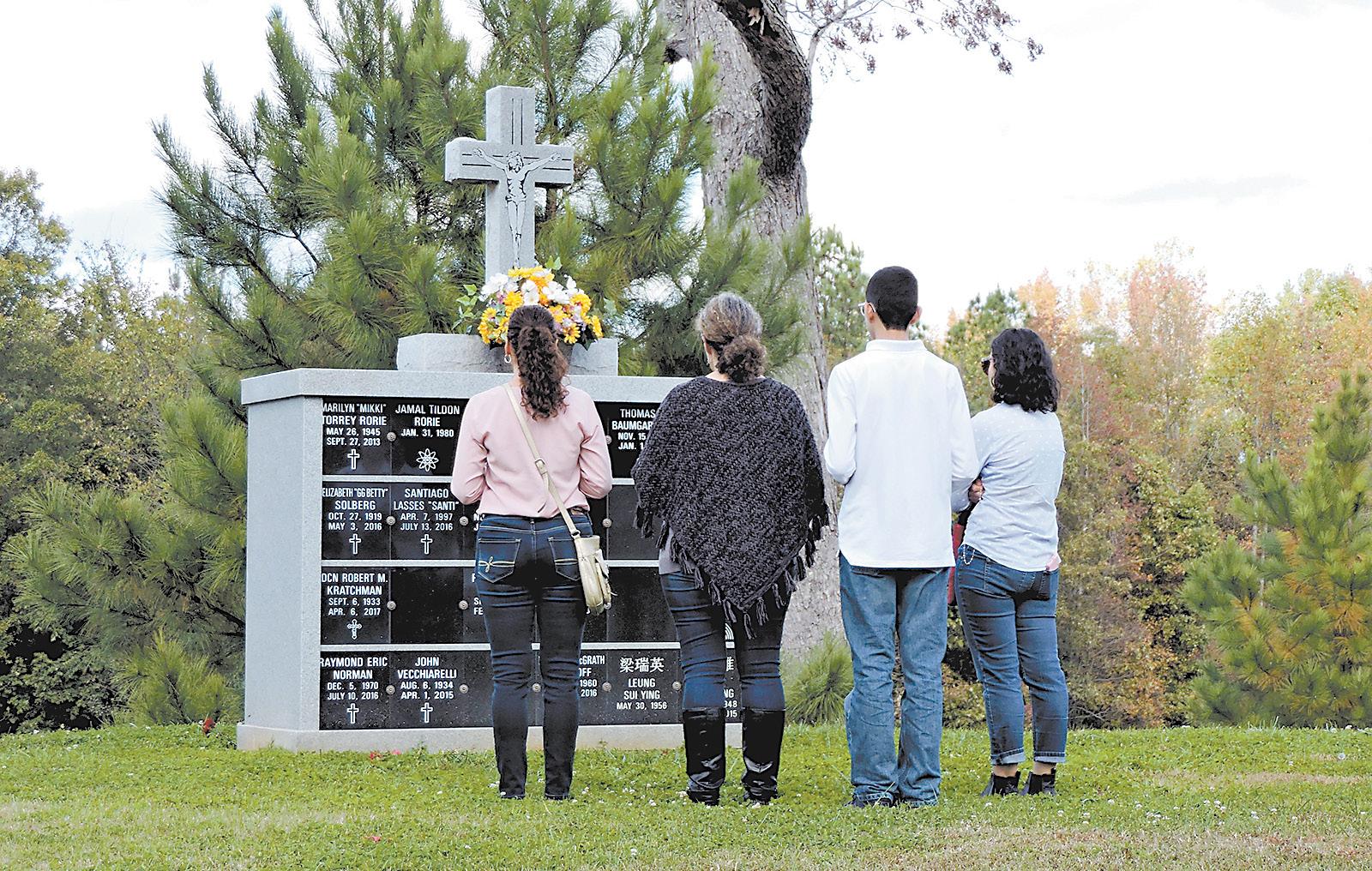
Why do we pray for
CAROL ZIMMERMANN Catholic News Service
WASHINGTON, D.C. — Praying for the dead might not make sense to nonbelievers but for Catholics it is part and parcel of the faith tradition, rooted in Old Testament readings and supported by the Catechism and the Church’s funeral liturgy.
“Our faith teaches us to pray for the dead,” said Bishop Edward K. Braxton of Belleville, Ill., in a 2015 All Saints’ Day reflection, stressing that although people hope that those who die are with God and the angels and saints, it is not necessarily a guarantee.
“Scripture teaches that all of the dead shall be raised. However, only the just are destined for the kingdom of God,” the bishop wrote.
According to the Catholic Encyclopedia, the clearest Bible reference about prayers for the dead is from the Second Book of Maccabees. When soldiers were preparing the bodies of their slain comrades for burial they discovered they were wearing amulets taken from a pagan temple which violated the law of Deuteronomy so they prayed that God would forgive the sin these men had committed.
The New Testament echoes this notion in the second letter of Timothy when Paul prays for someone who died named Onesiphorus, saying: “May the Lord grant him to find mercy from the Lord on that day.”
The Catechism of the Catholic Church also has something to say about prayers for the dead, stating: “All who die in God’s grace and friendship, but still imperfectly purified, are indeed assured of their eternal salvation; but after death they undergo purification, so as to achieve the holiness necessary to enter the joy of heaven” (1030).
The Roman catacombs where early Christians were buried also were places of prayer.
Today, prayers for the dead begin at the moment of death, often when family members are gathered around the bedside of the person who has died.
Prayers for death and grieving are among the “Catholic Household Blessings and Prayers,” published in 2007 by the U.S. Conference of Catholic Bishops, that includes prayers immediately after death, prayers for mourners, prayers at the graveside and a more general prayer for the dead.
Of course these prayers continue in the funeral liturgy, which is the “central liturgical celebration of the Christian community for the deceased,” according to the U.S. Conference of Catholic Bishops’
overview of Catholic funeral rites, online at www.usccb.org/prayer-and-worship/ bereavement-and-funerals/overview-ofcatholic-funeral-rites.cfm.
The funeral liturgy, the website points out, is “an act of worship, and not merely an expression of grief.”
It is a time when the Church gathers with the family and friends of the deceased “to give praise and thanks to God for Christ’s victory over sin and death, to commend the deceased to God’s tender mercy and compassion, and to seek strength in the proclamation of the Paschal Mystery,” it adds.
The prayers in the funeral liturgy express hope that God will free the person who has died from any burden of sin and prepare a place for him or her in heaven.
“The funeral rite is a prayer for the dead, designated by the Church as the liturgy of Christian burial,” wrote Bishop Braxton in his reflection.
Did you know?
The acronym “RIP” or R.I.P. is an abbreviation of the Latin phrase “requiescat in pace” or the English “Rest in peace.”
Pray regularly for the faithful departed, especially on Nov.
2
(All Souls’ Day).
He noted that many parishes “regularly disregard” the emphasis of this liturgy by printing funeral programs which say: “the Mass of the Resurrection: A Celebration of Life,’ even though the person has obviously not yet been raised from the dead.”
According to the Catechism, most Catholics who don’t merit hell still need purification before entering heaven and pass through a state when they die that the Church describes as purgatory.
In a question-and-answer page on www.BustedHalo.com, a Paulist-run website, Paulist Father Joe Scott said praying for the dead has “further origins in our belief in the communion of saints.”
The priest, an associate pastor at St. Paul the Apostle Catholic Community in Los Angeles, added that living members of this communion can “assist each other in faith by prayers and other forms of spiritual support.”
“Christians who have died continue to be members of the communion of saints,” he wrote. “We believe that we can assist them by our prayers, and they can assist us by theirs.”
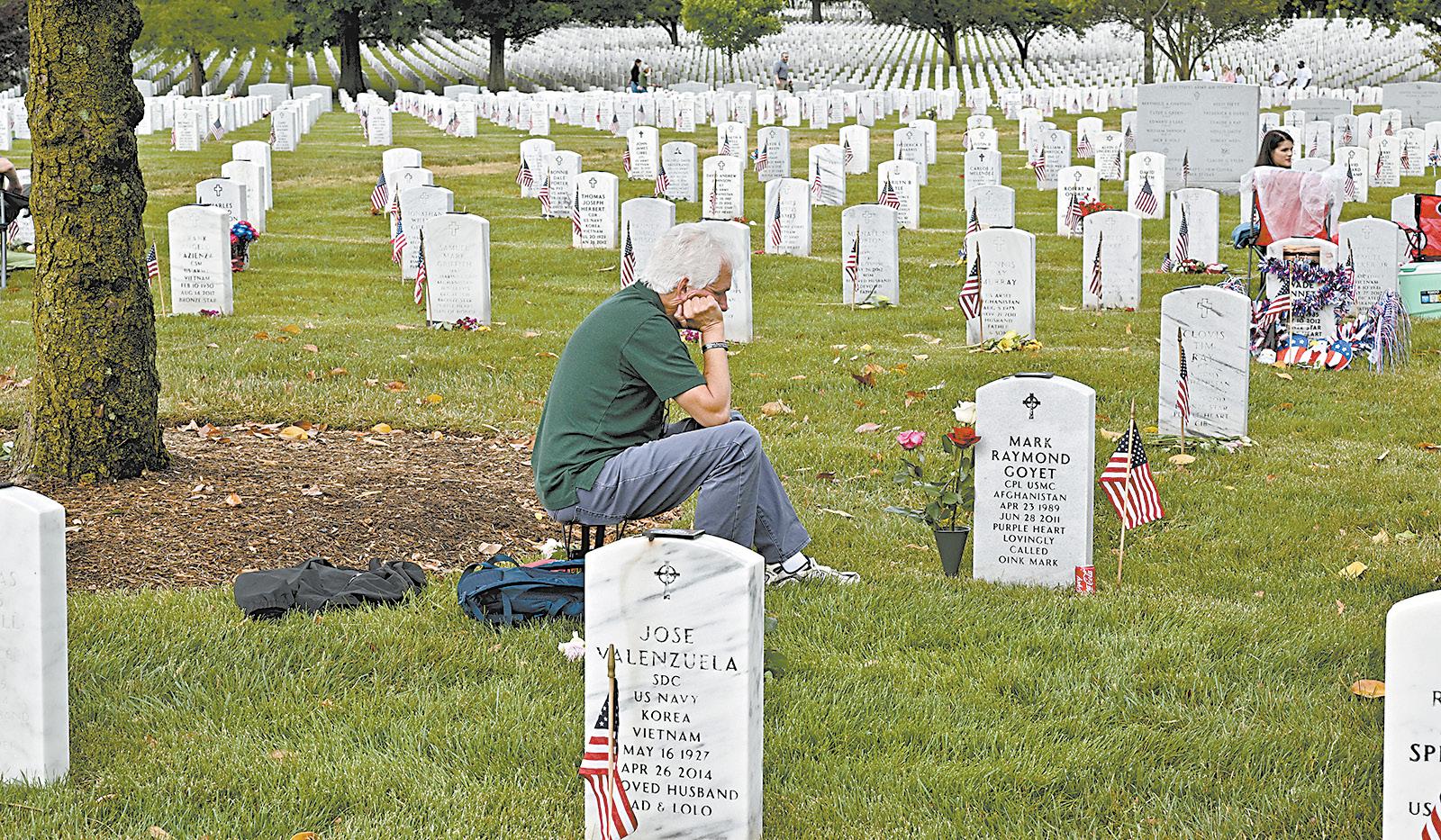
CAROL ZIMMERMANN Catholic News Service
WASHINGTON, D.C. — A tricky thing about grief is that it is not a one-shot deal. Although it is often strongest when it’s first experienced, it can sneak up at any time. It especially reappears on the anniversary of the death of a loved one.
Some have labeled these days as “deathversaries” and even though they are days that can bring up painful memories, they should not be ignored nor do they need to be completely depressing.
The internet, which is not always a place of solace, actually has plenty of advice for coping with anniversaries of a loved one’s death. Websites including www.modernloss.com or www.whatsyourgrief.com offer the following suggestions:
n Take flowers to the gravesite or other place where you remember your loved one.
n Look at old photos and home videos or put digital photos into photo album.
n Volunteer with a charity or cause your loved one liked, or make a donation to the charity in his or her name.
n Host a dinner party and invite those who knew this person best and cook foods they liked or gather at the person’s favorite restaurant.
n Do something your loved one would have enjoyed.
n Write about your loved one; write them a letter or plant a tree in their name.
n Take the day off work.
n Ask friends or family members for help.
The Mayo Clinic, based in Rochester, Minn., notes on its website, www.mayoclinic.org, that reawakened grief can occur years after a loss, particularly when people are confronted with reminders of their loved one’s death. The site advises people to be prepared,

especially for anniversary reactions and to plan a distraction for the day or reminisce about the relationship. It reiterates some of the suggestions previously mentioned and also urges people to allow themselves to “feel a range of emotions. It’s OK to be sad and feel a sense of loss, but also allow yourself to experience joy and happiness. As you celebrate special times, you might find yourself both laughing and crying.”
“There’s no time limit for grief, and anniversary reactions can leave you reeling. Still, the intensity of grief tends to lessen with
time,” it adds.
Many cultures celebrate the death anniversary of loved ones by gathering together as families and sharing special foods.
Catholics often mark the anniversary of a loved one’s death by attending Mass or having a Mass offered for the deceased.
Catholics also celebrate feast days which are the anniversaries of saints’ deaths. The anniversaries of deaths of loved ones will likely not be celebrated in the same manner as they are for major saints: with festivals and parades through streets, but recollections on this day share the same idea: recalling when one’s life on earth ended and eternal life began.
For many people, the idea of being festive on the anniversary of someone’s death is hard to imagine and might never happen, but for those grieving a loss there are signs that healing has begun and that comfort or renewed strength is present.
Father Eamon Tobin, pastor of Ascension Catholic Community in Melbourne, Fla., who wrote a parish column about coping with loss, says signs of healing after grief include:
n Being able to talk about your loved one in a more comfortable manner.
n Realizing that while “life is not the same, it can be good again.”
n Grief becomes less engrossing.
n New inner resources are developed or strengthened.
“Grief work, though very painful,” he writes, “is good and holy.”
The priest also wrote that “grief is the way God intended for us to deal with loss.”
He said the “world’s way is denial. It tells us to ‘move on’ even before we have started to grieve. Grief work (and it is work) is the only thing that will heal our loss or at least help us to live with it.”
The Mass is the highest form of prayer in the Church, and the most effective prayer that could be said on behalf of those who have gone before us. In Masses for the dead, and especially funeral Masses, “the Church offers the Eucharistic sacrifice of Christ’s Pasch for the dead so that, since all the members of Christ’s Body are in communion with one another, what implores spiritual help for some, may bring comforting hope to others.” (“General Instruction of the Roman Missal,” 379)
As death approaches, the Church stays close to the one who is dying, to give comfort and support. The family should ask that Communion be brought to the dying (this is called “Viaticum,” Latin for “food for the journey”).
Members of the local church may wish to join the family in a vigil of prayer. After the person’s death, the family is encouraged to continue praying, and to participate in the preparation of the vigil (wake) and funeral liturgies. The following prayer may be recited with a dying person, alternating with times of silence. The Our Father, Hail Mary and Glory Be are also appropriate. The dying person may also be signed on the forehead with the cross, as was done at baptism.
Holy Mary, pray for me. St. Joseph, pray for me. Jesus, Mary, and Joseph, assist me in my last agony.
The following prayer may be recited immediately after death and may be repeated in the hours that follow:
V. Eternal rest grant unto him (her), O Lord.
R. And let perpetual light shine upon him (her).
V. May he (she) rest in peace.
R. Amen.
V. May his (her) soul and the souls of all the faithful departed, through the mercy of God, rest in peace. R. Amen.
O God, by whose mercy the faithful departed find rest, send your holy Angel to watch over this grave. Through Christ our Lord. R. Amen.


At www.usccb.org/prayers/ prayers-death-and-dying: Find more prayers and Scripture readings for the dying and for the dead
At www.catholicnews agency.com/resources/ prayers : Find more prayers, including a prayer to St. Joseph for a holy death
Pre-planning is making your cemetery and funeral arrangements before your death. This allows your wishes to be known, thus eliminating an incredible burden on your loved ones during the very stressful and painful hours after your death. Pre-planning is a concrete sign of your love for surviving family members.
The most obvious benefit is that you will relieve your loved ones of the burden of making your cemetery and funeral arrangements at a time of tremendous grief. Your advance planning will give your family the guidance they need to feel comfortable that they are carrying out the decisions you made. Pre-planning may prevent disagreement among survivors at an emotionally charged time and can assure that emotional over-spending does not occur. By pre-planning and pre-funding cemetery and funeral arrangements, you might be creating exempt assets should you ever have to go on public assistance. The costs of cemetery property have been escalating at the rate of 100 percent every 10 years. By purchasing in advance, you are locking in today’s pricing.
Adults of any age who make their own decisions should have a plan. Like your will, it can be revised throughout your life as needs change. In general, the earlier you preplan the more options you have. Your cemetery and funeral options
Also online

will probably never cost less than they do today. Statistics show that 43 percent of all deaths are unexpected; we are not guaranteed any tomorrows.
In our culture, few families are comfortable discussing death and loss. This is just one of those things that does not get easier as time goes by. Now is the best time for you to get your plan in order.
Why should I choose to be buried in a Catholic cemetery?
First and foremost, Catholic cemeteries are a vital part of our Church’s heritage of caring for and burying the bodies of the dead in blessed ground — one of the corporal works of mercy.
— www.catholic-cemeteries.org
Can I donate my body to a university?
Yes. But you must be sure that the body will be buried properly when the experimentations are completed. In this case a Mass should be offered for the deceased.
At www.ncbfs.org Learn more about preneed funeral trusts, funeral insurance, cremation vs. burial costs, and how to calculate funeral costs
At www.catholicnewsherald.com : See a list of local parishes’ funeral planning guides

‘A person tends to die as he has lived. If my life has been a journey with the Lord, a journey of trust in His immense mercy, I will be prepared to accept the final moment of my earthly life as the definitive, confident abandonment into His welcoming hands, awaiting the face to face contemplation of His Face. This is the most beautiful thing that can happen to us: to contemplate face to face the marvelous countenance of the Lord, to see Him as He is, beautiful, full of light, full of love, full of tenderness.’
— Pope Francis General Audience of Nov. 27, 2013
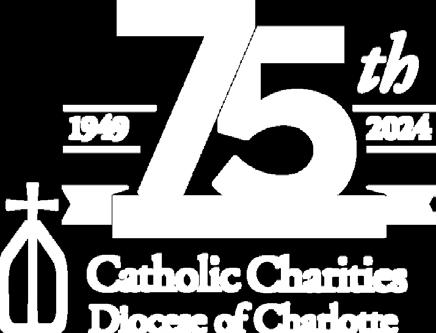
Catholic Charities helped 199 individuals receive a dignified burial last year through our Burial Assistance program
Our goal is to support families who may struggle to provide a compassionate and dignified burial for their loved ones
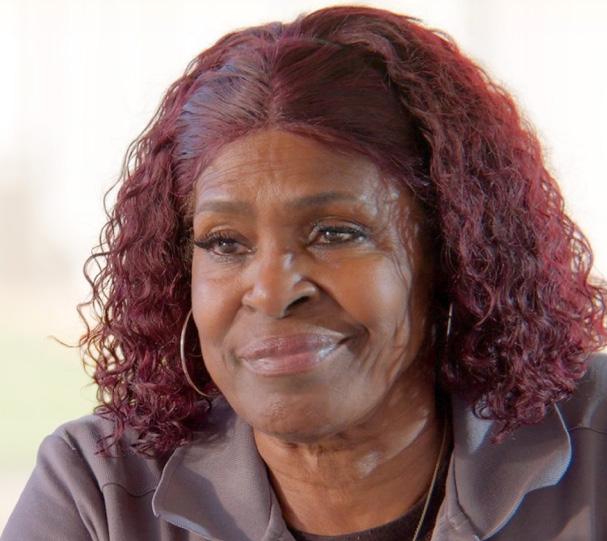
Without this service, some families would have no choice but to leave their loved ones unclaimed at the morgue.
This program relies on the generosity of donors. To support the Burial Assistance program, please visit ccdoc.org/donate.
Life itself is always a good, and is a quality that can never be lost.
Ordinary or proportionate means are those that (in the judgment of the patient assisted by health care professionals) offer a reasonable hope of benefit and do not entail an excessive burden or impose excessive expense on the family or the community. A person has a moral obligation to use ordinary means.
Extraordinary or disproportionate means are those that (in the judgment of the patient assisted by health care professionals) do not offer a reasonable hope of benefit, do entail an excessive burden, or do impose excessive expense on the family or the community. A person may forgo extraordinary means.
In principle, there is an obligation to provide patients with food and water, including medically assisted nutrition and hydration for those who cannot take food orally.
Medically assisted nutrition and hydration become morally optional when they cannot reasonably be expected to prolong life or when they would be excessively burdensome for the patient or would cause significant physical discomfort.
Euthanasia is an act or omission that of itself or by intention causes death to alleviate suffering. Catholics may never condone or participate in euthanasia or assisted suicide in any way. Dying patients who request euthanasia should receive loving care, psychological and spiritual support, and appropriate remedies for pain and other symptoms so that they can live with dignity until the time of natural death.
— National Catholic Bioethics Center. Learn more online at www.ncbcenter.org.
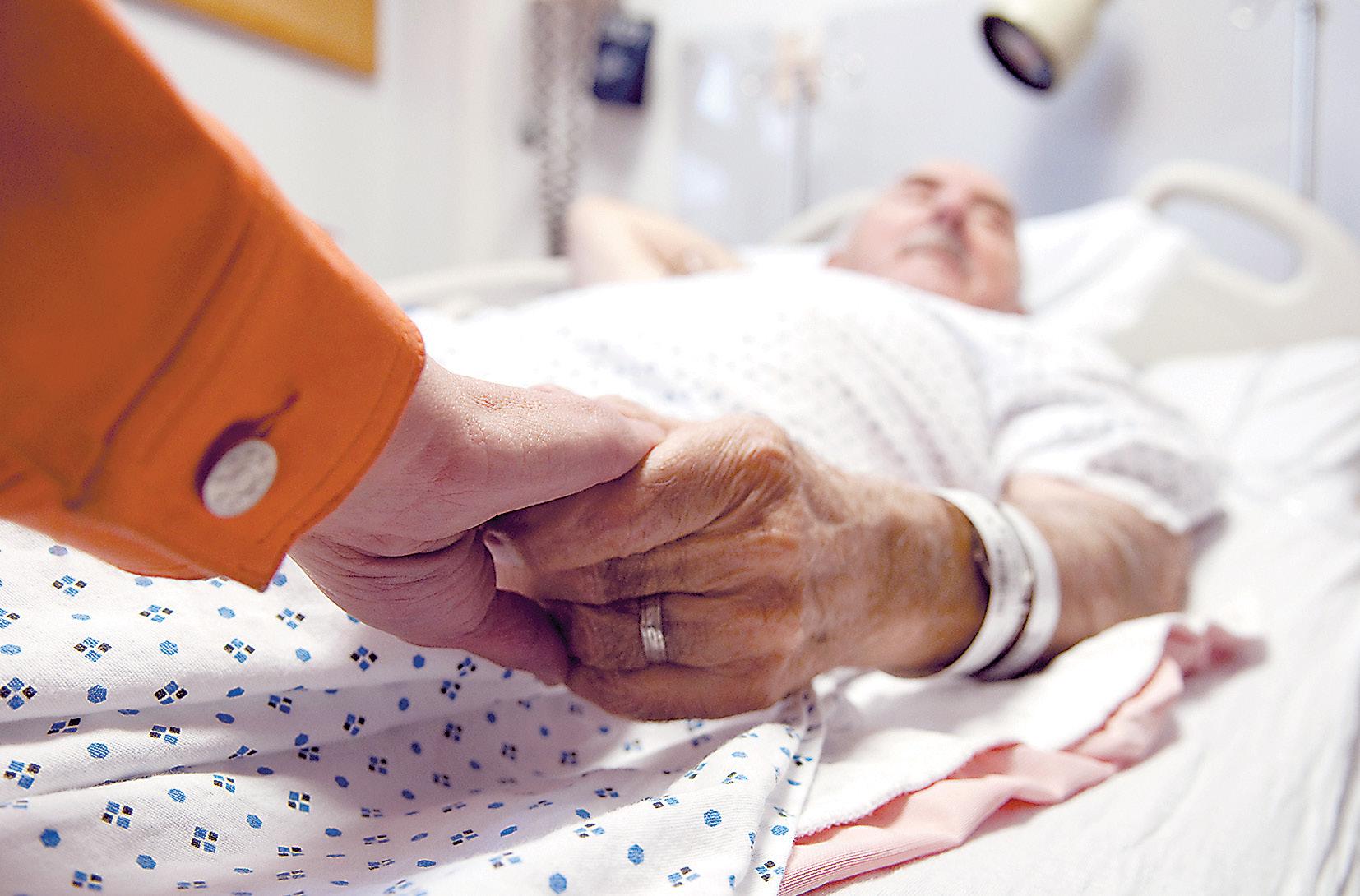
A note on general principles regarding end-of-life care
No summary can substitute for thorough catechesis, but some general principles are clear. We are entrusted by God with the gift of life, and in response, we care for our lives and health in obedience and gratitude to our Creator.
This obliges us to make use of appropriate, effective medical care. However, even effective treatments may at times impose such a great burden that we, in good conscience, may forgo or discontinue them. This applies even to life-sustaining treatments. Of course, nothing should be done or deliberately omitted to hasten death.
The Church affirms the inviolable dignity of every person, regardless of the duration or extent of the person’s incapacity or dependency. Nothing diminishes the unchangeable dignity and sanctity of a person’s life, or the obligation to protect and care for it. In principle, assisted feeding and hydration should be provided unless it cannot sustain life or is unduly burdensome to the patient, or if death is imminent whether it is provided or not.
Moreover, no one should choose suicide, nor counsel or assist another to take his or her own life.
Judging the effect and burden of treatments can be difficult, especially as death draws near. To understand health facts and treatment options, we need professional medical advice. To understand Catholic moral teaching, we need to consult Church teaching and those who can faithfully explain it.
After informing our consciences, we need to inform our families. If we are unable to make decisions, they
most often have legal authority to make surrogate decisions on our behalf. Or we may designate a health care agent by a durable power of attorney.
Though it is often helpful to also have written, signed documentation, no living will “check box” can ever replace clear conversations about our faith-guided principles. The best option is to choose an agent who will make medical decisions on our behalf in accord with our Catholic faith and Church teaching.
We should also inform family of our pastoral care preferences, and make clear that after death, we desire prayer, funeral rites and Christian burial.
Those who are sick should not be alone, as multiple popes have reminded us in messages for the annual World Day of the Sick. Patients who have serious or life-threatening illnesses, as well as their families, can be provided with physical, psychological and spiritual care through team-based palliative care. Hospice care can provide similar integrated care for those nearing death and for their families.
Pastoral care is integral to both palliative and hospice care, and includes making available the sacraments: Eucharist, confession, anointing of the sick and Viaticum. It also includes supportive prayer and support for decision-makers. It may be helpful to familiarize ourselves with local services available in preparation for our own passing or that of loved ones. Even after death, accompaniment continues. Our prayers can help those who are being purified in purgatory, so it is a spiritual work of mercy to pray for those who have died.
— USCCB
The Church affirms the inviolable dignity of every person, regardless of the duration or extent of the person’s incapacity or dependency.
CARE
What kind of legal documents or arrangements about your end-of-life medical care should you have?
An “Advance Medical Directive” and “Durable Power of Attorney for Health Care” (or “Health Care Proxy”) are legal documents that take effect if the patient becomes incompetent. Even though these documents can be written without the assistance of an attorney, some states give them considerable legal weight.
An Advance Medical Directive specifies what medical procedures the patient wishes to receive or to avoid. (An Advance Medical Directive sometimes is called “A Living Will,” but because of its association with the advocacy of euthanasia, we have chosen to avoid this phrase.)
Durable Power of Attorney specifies a particular individual (variously called a “proxy,” “agent,” or “surrogate”) to make medical decisions on behalf of the patient (or the “principal”) when the patient is no longer able to do so.
When neither of these instruments is drawn up, the task of making important medical decisions usually falls to the family.
Caring for Charlotte Area Catholic Families in Their Hour of Need Since 1926 FUNERAL SERVICE, INC.
Charlotte 704-334-6421
Pineville 704-544-1412
Mint Hill 704-545-4864
Derita 704-596-3291

Most states have laws governing the use and implementation of the Advance Medical Directive and Durable Power of Attorney.
All hospitals and health care facilities are required by law to provide written information to the patient about the right to accept or refuse medical treatment and the right to formulate an Advance Directive and/or designate Durable Power of Attorney. The health care facility must also provide written policies stating how the patient’s Advance Directive or Durable Power of Attorney will be implemented. People should remember that they do not have to sign any Advance Directive given to them by the hospital.
WHICH ONE SHOULD YOU CHOOSE?
Make certain that your Advance Directive forbids any action that the Catholic faith considers to be immoral, such as euthanasia or physician-assisted
The details
of a
patient’s medical condition at a specific time need to be
considered.

At www.ncbcenter.org : What are the Church’s teachings on end-of-life decisions and how difficult will it be to follow them? Must we endure a great deal of pain? What if I am no longer able to make medical decisions for myself? Order or download a copy of “A Catholic Guide to End-of-Life Decisions,” which describes how you might approach end-of-life decisions in light of the teachings of the Church.
suicide. (A Catholic hospital, in any case, will not follow a directive that conflicts with Church teaching.)
Once a directive is made, copies should be distributed to the agent and anyone else the patient deems appropriate. One should periodically review the provisions of an Advance Directive and, when there is a revision, all previous copies should be destroyed.
The usefulness of an Advance Directive, which gives specific instructions for care, is limited because of its inflexibility. If circumstances change significantly between writing the Advance Directive and its implementation, the instructions may be of little value to those acting on a patient’s behalf, or may even hinder their freedom to make good decisions. There may also be a problem of interpreting the document when it is not clearly written. An Advance Directive oftentimes does not allow for adequate informed consent because one must make a decision about a future medical condition which cannot be known in advance.
When drawing up an Advance Directive, therefore, one should focus on general

Msgr. Richard Bellow – 2023
Abbot Oscar Burnett, OSB – 2017
Rev. John P. Bradley – 2003
Rev. Raphael Bridge, OSB – 1996
Rev. Brian Cook – 2023
Rev. Msgr. John P. Manley – 1981
Rev. Bernard A. Manley Jr. – 2016
Rev. Charles T. Reese – 2017
Rev. John A. Regan – 1976
Rev. D. Edward Sullivan – 2009
Rev. Stephen A. Sullivan - 1989


goals rather than on specific medical procedures.
Assigning Durable Power of Attorney is preferable to an Advance Directive because it leaves decisions in the hands of someone whom the patient has personally chosen.
A proxy agent also can be more sensitive and responsive to the decision-making that is necessary for a given case. When assigning Durable Power of Attorney one should choose an agent of good moral character – someone who is known to be capable of making sound decisions under stressful circumstances. The agent should know the teachings of the Church and possess the practical wisdom to apply them to changing circumstances.
An agent, of course, must also survive the patient. One may designate alternate agents in case one’s first choice, for some reason, is unable to act.
A good agent makes decisions for the patient in light of what the patient would choose if able to do so. The proxy, therefore, should be very familiar with your moral convictions and wishes. When there is an Advance Directive from you, this should be the guide. When there is not, the agent must act on the oral instruction that has been given. Sometimes, however, acting in your best interests means ignoring instructions that are obviously unwarranted or clearly immoral. No agent is bound to carry out actions that conflict with morality and the faith.
ALSO NOTE
When formulating any Advance Directive and discussing end-of-life issues, avoid using the expression “quality of life” because it is used by advocates of euthanasia to suggest that some lives are not worth living.
While illness and other circumstances can make life very difficult, they cannot diminish the inestimable worth of each human life created by God. Life itself is always a good, and is a quality that can never be lost. Still, we need not cling to this life at all costs (what’s called “therapeutic obstinacy”), since the life to which we have been called in Christ is incomparably better.
— National Catholic Bioethics Center

The difference ultimately lies in the intentionality of the patient or health care professional. A person should never intend in any way the death of a patient or the hastening of a patient’s death. Sometimes it is difficult to determine whether a medical decision made during end-of-life care includes such an intention. Certain means can be used to alleviate a patient’s pain, for example, by a physician who foresees that the patient’s life may be shortened as a result (as an indirect, non-intended but tolerated effect of the therapy), but similar means could be used to intentionally shorten a patient’s life.
Basic care (such as nutrition and hydration, pain relief, antibiotic treatment, and postural change) is generally the same for all patients and should always be provided. The evaluation of proportionate or disproportionate means, however, is based on objective and subjective factors for an individual patient. For example, total parenteral nutrition may be a proportionate means in an industrialized country but a disproportionate means in a developing country, where it is not affordable or is technically too difficult to administer. A treatment may also be disproportionate because it is futile or because it causes complications that are too hard for the patient or the patient’s family to bear.
The right of patients to self-determination can lead them to include morally illicit requests in advance directives, such as requests to have ordinary care withdrawn.
An effective therapeutic alliance between a physician, a patient and the patient’s proxy is the best way to address end-of-life issues. Requests made by a patient in an advance directive may preclude therapeutic dialogue, preventing such an alliance.
A patient may react to an illness or a specific therapy differently than expected, or medical advances occurring after a directive was written may change the patient’s treatment options in unexpected ways. In such situations, an advance directive may prevent objective moral analysis.
Advance directives are often difficult to interpret and apply in the actual circumstances encountered by health care professionals, relatives and proxies. Advance directives that do not differentiate between proportionate and disproportionate treatments may be promoted by pro-euthanasia associations as a first step toward acceptance of euthanasia.
A Provider Orders for Life-Sustaining Treatment (POLST) is a medical order specifying whether life-sustaining treatment is to be used or withheld for a specific patient in various circumstances. It carries the signatures of the health care provider and sometimes the patient.
It differs from a do-not-resuscitate order

and a traditional advance directive in that it is actionable from the moment it is signed by the health care provider, even if the patient is still competent and is not terminally ill.
One reason given for use of a POLST and similar instruments is the avoidance of futile or unwanted treatment. Even without a POLST, however, patients are never obligated to submit to health care procedures whose burdens outweigh therapeutic benefits.
Decisions about forgoing life-sustaining treatment should be made at the time and in the circumstances in which the decisions are needed (not years ahead), and they should be made by the patient or the patient’s surrogate in consultation with the patient’s attending physician, in line with the patient’s known wishes and best interest (not by health care workers who are strangers to the patient but have access to his POLST).
The details of a patient’s medical condition at a specific time need to be considered when such decisions are made, including the imminence of anticipated death, the likely risks and side effects of treatment, the suffering
treatment is likely to cause, and the expense to the patient’s family and community.
An optimal advance directive is written in very general terms. Instead of specifying treatment, it designates a health care proxy or surrogate who will make decisions if the patient is incompetent, someone who knows the will of the patient and the teachings of the Catholic Church.
What is the difference between an advance directive and a POLST?
An advance directive is a legal document that allows a person to identify a proxy or surrogate decision maker and express his wishes about receiving or forgoing health care, including life-sustaining treatment, in the event that he is no longer able to communicate such wishes. An optimal advance directive is written in general terms that identify principles on which a surrogate is to base decisions, made with the assistance of a physician, in the specific health care situation encountered by the patient.
A POLST is a medical order about receiving or forgoing lifesustaining treatment that takes effect from the moment the health care provider signs it, even if the patient is competent and not terminally ill.
Why is the designation of a health care proxy or surrogate morally preferable to use of a POLST?
Unless death is imminent, it is virtually impossible to compare the benefits and burdens of treatment before a patient has encountered a specific health care situation. Thus, pre-signed checklists of treatments to be received or withheld are not helpful for making decisions based on the best interest of the patient and consistent with the patient’s wishes.
A well-informed proxy who knows the patient, understands the values held by the patient, and respects the natural moral law can provide a far better understanding of how the patient’s wishes are to be respected than can a general checklist that is not tied to any specific patient care situation.
— National Catholic Bioethics Center
More online

At www.ncbcenter.org : Find more resources and helpful guidelines on end-of-life care
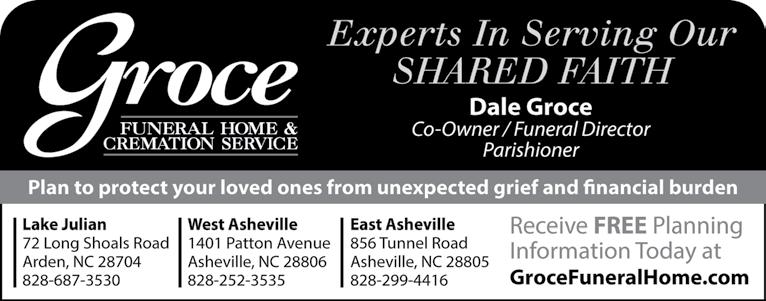
Everything we have, everything we are, and everything we will become is a gift from God. As stewards of those gifts, we are called to return a portion of our time, talent and treasure in gratitude for God’s great bounty. The Diocese of Charlotte – with its parishes, offices, agencies, schools and outreach ministries – has many ways for you to give back in gratitude to God:
Donate online
Secure donations can be made online via credit card or direct debit at www.
charlottediocese.org/donations for:
Catholic Charities
Catholic Conference Center
Catholic Schools
Catholic Campus Ministry
Charlotte Catholic High School Capital Campaign
Christ the King High School Capital Campaign
Diocesan Support Appeal (DSA)
Eucharistic Congress
Priests’ Retirement & Benefits Collection
Seminarian Education Campaign
Donations in any amount may be made via mail directly to the Diocese of Charlotte, or to any of the ministries mentioned at left. Checks should be made payable to the particular program (as listed above), except for Campus Ministry, which should be made payable to the Roman Catholic Diocese of Charlotte. Please designate in the memo section of your check where your gift should be directed. Please send donations to:
Diocese of Charlotte Attn: Finance Office 1123 South Church St. Charlotte, NC 28203-4003
Gifts of stock may be made via electronic transfer or by physical certificate. The Diocese of Charlotte
maintains a brokerage account with Wells Fargo Advisors for the purpose of processing electronic transfers to the diocese for the benefit of the diocese or any of its parishes, schools or agencies. Refer to the Stock Donations Form section at https://tinyurl.com/mr739624 for detailed guidance on initiating a transfer of stock.
Many people choose to contribute to the future of the Church in western North Carolina through planned gifts, including real estate, life estate, retirement account plans, life insurance policies, charitable gift annuities, charitable remainder trusts, and gifts made through a will or living trust.
The Foundation of the Roman Catholic Diocese of Charlotte aims to provide long-term financial stability for the diocese and its parishes, schools, ministries and agencies. Through
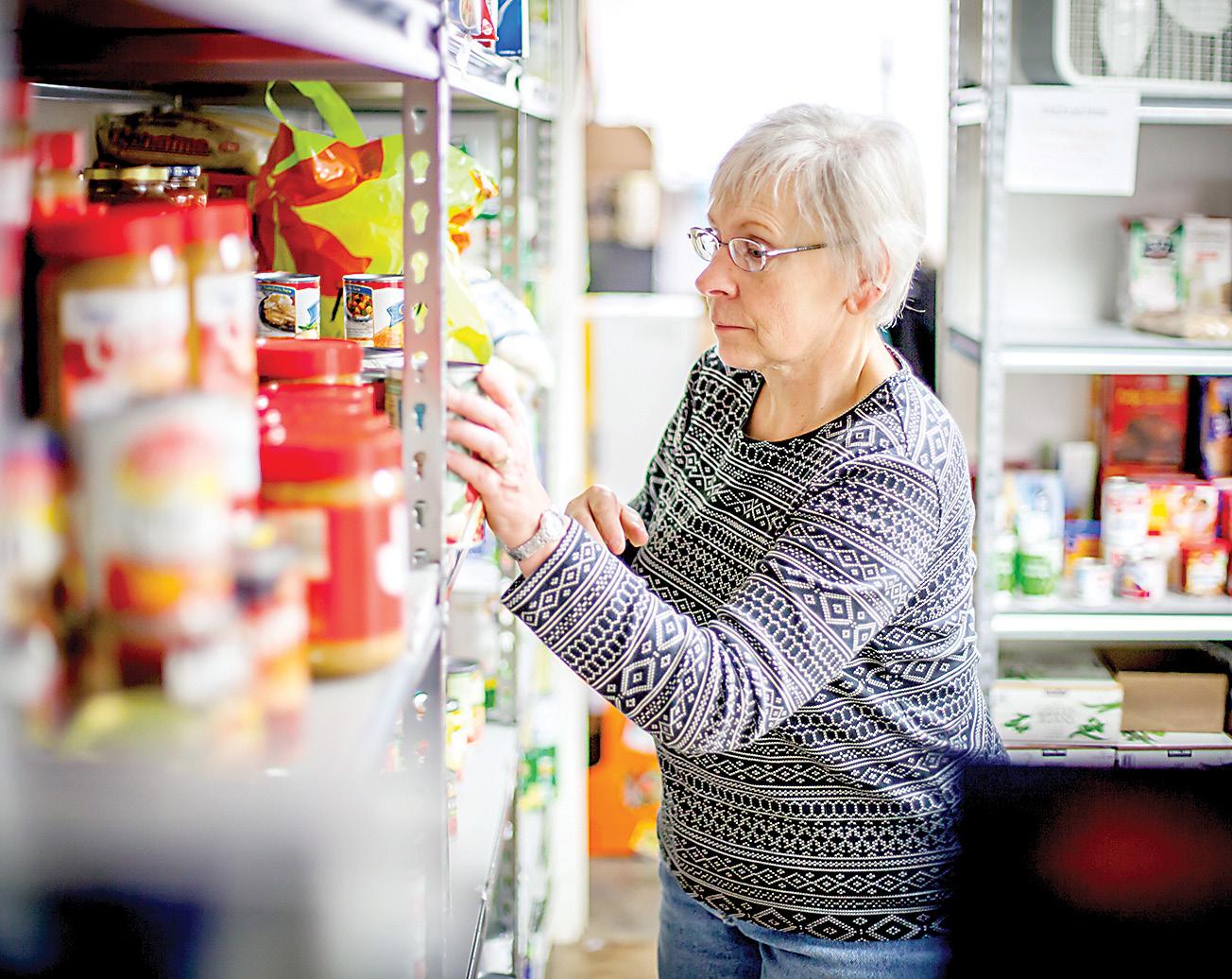
Make a donation today to Catholic Charities Diocese of Charlotte that will transform lives by strengthening families, building communities, and reducing poverty in your local neighborhoods.
It’s easy to help a neighbor in need:
Donate securely online at www.ccdoc. org/online/donate, using a credit or debit card or EFT/ACH.
Donate by mail
Donations may be mailed to:
Catholic Charities Diocese of Charlotte Attn: Central Processing Office 1123 South Church St. Charlotte, NC 28203-4003
Checks should be made payable to Catholic Charities Diocese of Charlotte.
(Please include your address, daytime phone number and parish.)
Double the impact of your donation with
your employer’s matching gift. If you would like to donate via stock, IRA contribution, family foundation or charitable gift fund, call 704-370-3349.
Catholic Charities also has opportunities for you to donate your car, truck, RV, boat, motorcycle or other vehicle. For details, visit www.ccdoc.org/ donate/donate-cars-vehicles, or call (tollfree) 855-930-GIVE or 855-930-4483 to speak with Catholic Charities’ partner, Charitable Auto Resources.
Food donations
Catholic Charities Diocese of Charlotte’s
endowments and other planned gifts, it provides a means to generate income to help sustain the long-term strength and viability of Catholic institutions in western North Carolina. The foundation currently has over 370 endowments.
To leave a bequest to the Church in your will, use the following language: n For a parish, Catholic school or Catholic agency, the listing should be:
“Michael T. Martin, Bishop of the Roman Catholic Diocese of Charlotte, or his Successors in Office for the (name and city of parish, school or agency).”
n For the diocese, the listing should be:
“Michael T. Martin, Bishop of the Roman Catholic Diocese of Charlotte, or his Successors in Office.”
n For the Diocese of Charlotte Foundation, the listing should be:
“Foundation of the Roman Catholic Diocese of Charlotte to be added to or establish the (name) endowment fund.”
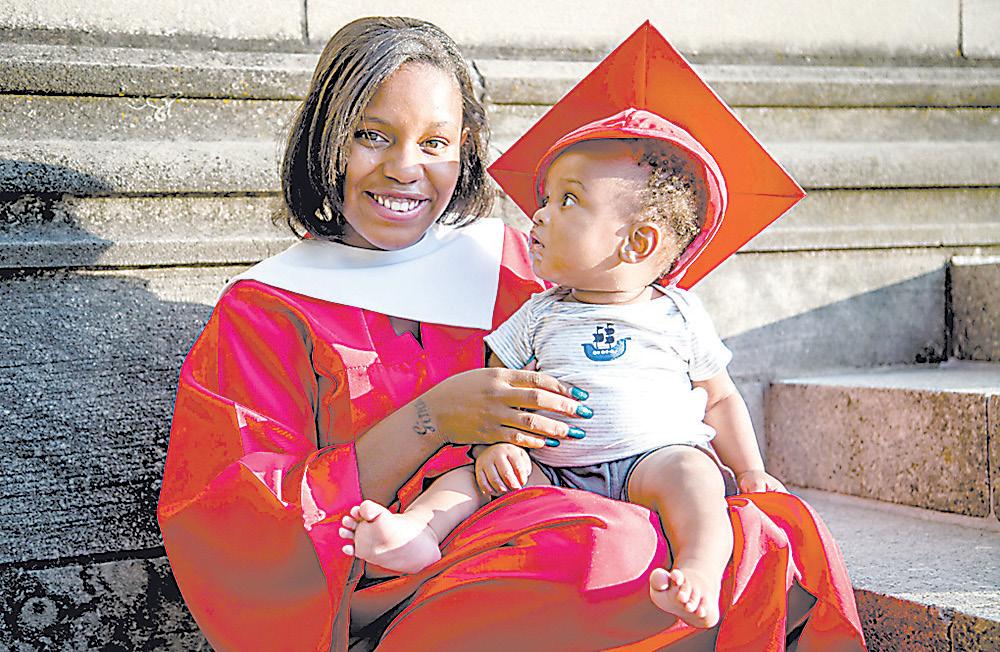
Who to contact
For details about any of these planned giving opportunities, contact: Gina Rhodes: gmrhodes@rcdoc.org
704-370-3364
Jacki McCarthy: jrmccarthy@rcdoc.org 704-370-3348

food pantries in Charlotte, Winston-Salem and Asheville rely heavily on donated food and non-food items for weekly distribution to clients. For food pantry locations and drop-off times, visit www.ccdoc.org/donate/donategrocery-items.
Refugees often arrive in this country with few material possessions. Their initial needs are many. Catholic Charities depends on donations of gently used furniture and household items to prepare a comfortable, welcoming home for newly arriving refugee families in the Charlotte area. Donated items must be clean and in
good repair.
ASHEVILLE: Donations needs are ever evolving, so please consult our sign-up form for details. Please send details of the items you have to offer. Donations should be clean and in good condition. Questions? Email: AVLrefugee@ccdoc.org.
CHARLOTTE: Please email Mohamed Ali at maali@ccdoc.org with a list and photos of items, along with donor contact information and pick-up location. If you have questions, call 704-370-3251. WINSTON-SALEM: Furniture and household items are not generally accepted at this location. Questions? Call: 336-727-0705.